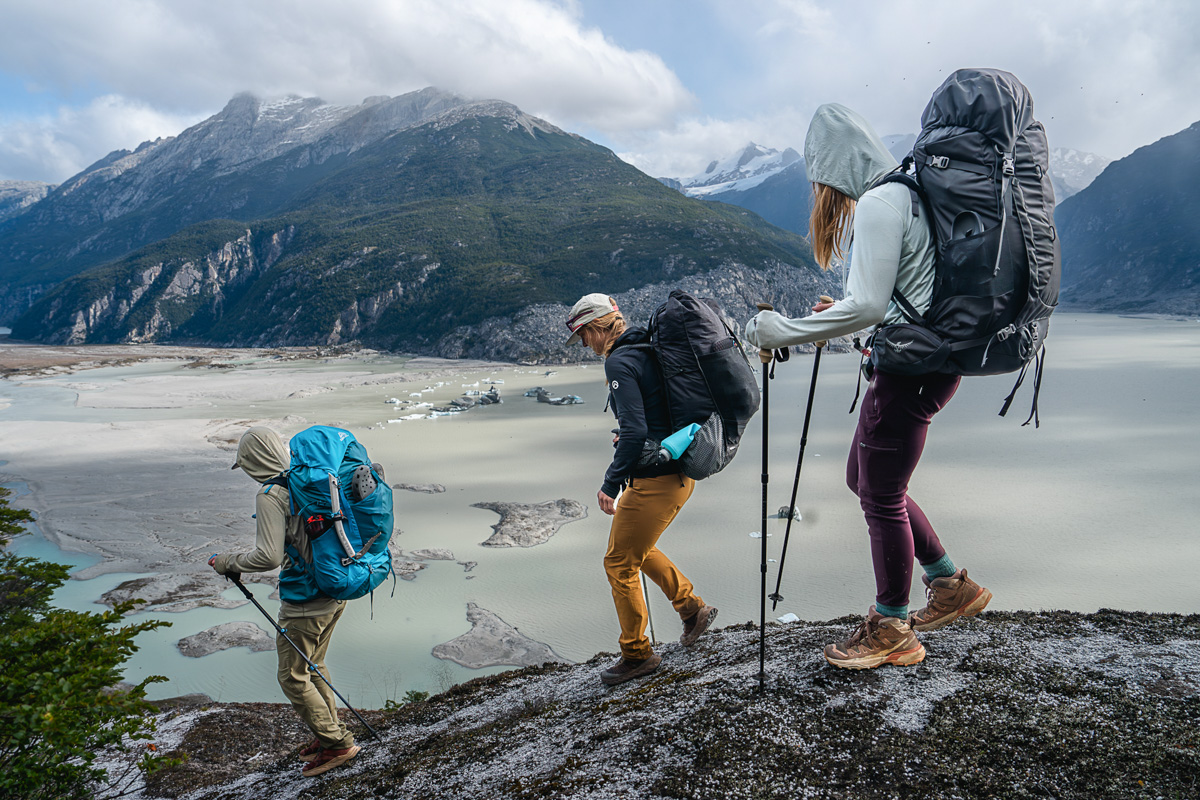
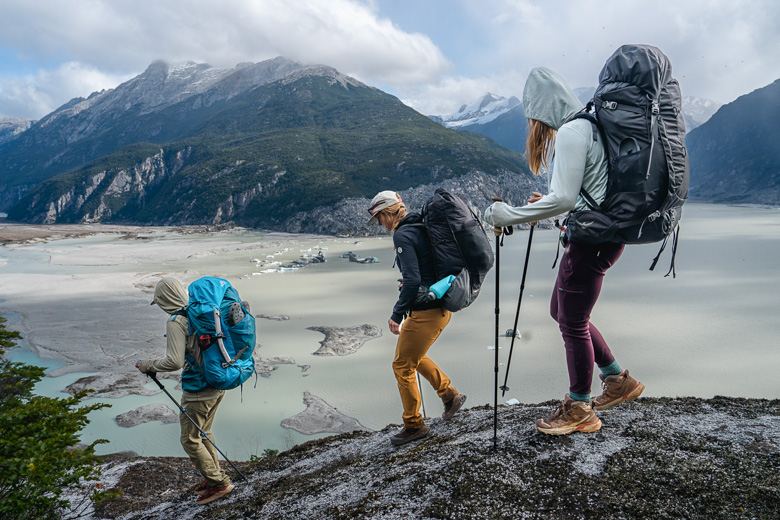
Hiking boots are critical to your comfort and performance on the trail, but this no longer has to mean a stiff and burly model that will weigh you down. The modern day trend is toward lighter materials that still offer decent support, and waterproof boots are the most popular by far. After years of testing, our trail-hungry team narrowed down a selection of 17 worthy models for this round-up. Our picks for the best hiking boots of 2025 below are broken down into three main categories: lightweight boots for day hiking and fastpacking, midweight options that work well for most backpacking trips, and heavyweights for rough terrain or hauling a large load. For more information, see the comparison table and buying advice below the picks. Please note: While this lineup includes boots for both men and women, we also have a full review dedicated to women's hiking boots.
Editor's note: We updated this guide on October 23, 2024, to include more information in our buying advice, add the Lowa Renegade Evo GTX Mid, and ensure our product selection is up-to-date with current colorways, designs, and specs.
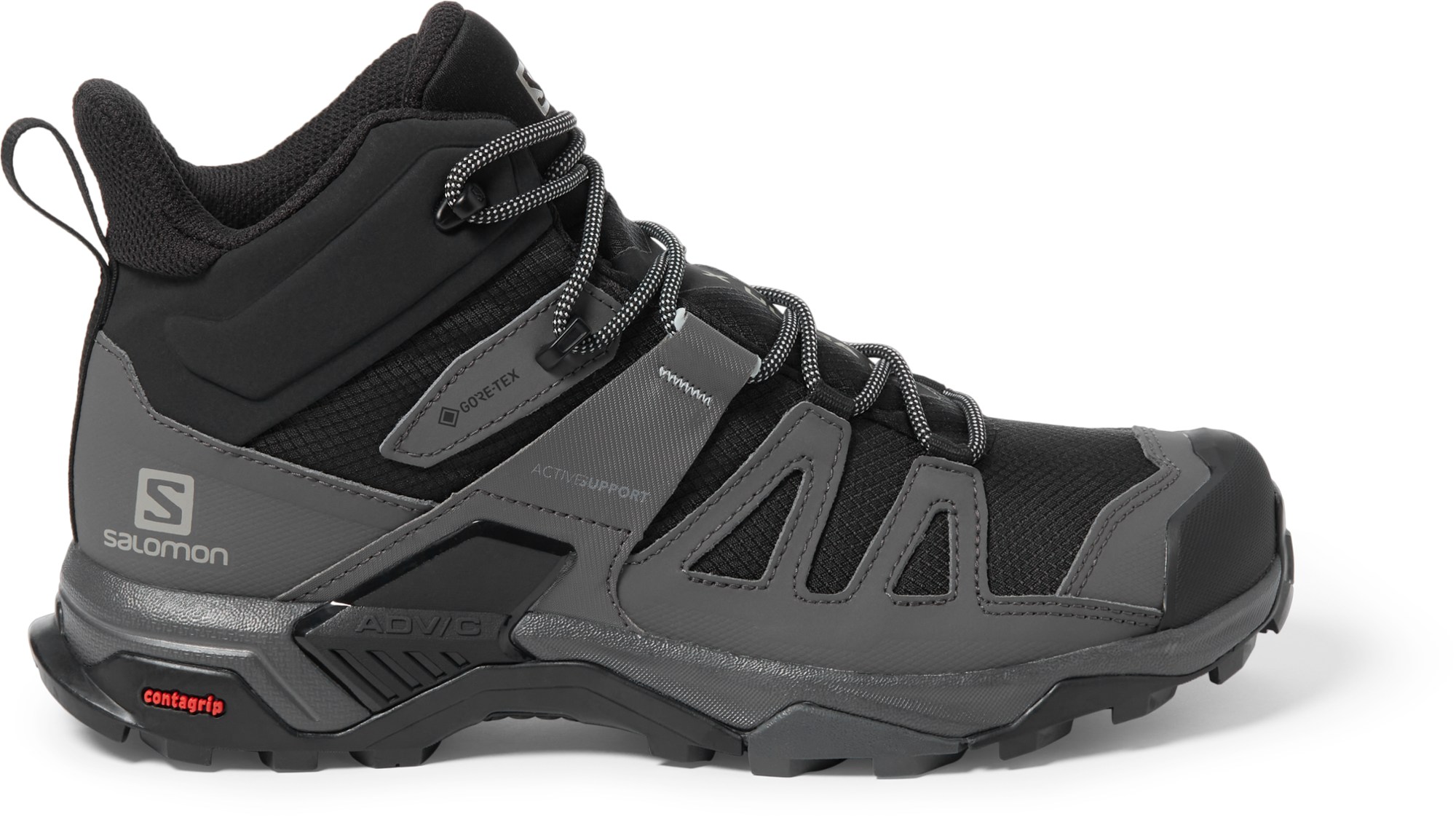 Category: Lightweight
Category: Lightweight
Weight: 1 lb. 14 oz.
Waterproof?: Yes (Gore-Tex)
What we like: Fast, light, flexible, and reasonably priced.
What we don’t: Thinner underfoot and less stable than the Salomon Quest 4 below.
Built like a trail running shoe but with added ankle support and protection, the Salomon X Ultra 4 Mid is our favorite all-around hiking boot for 2025. Updated with a sleeker upper and revised chassis, the latest version of the boot offers an impressive combination of comfort and low weight—all while retaining solid toe protection, stability, and well-rounded traction. You also get Salomon build quality, which we’ve found tends to stand up to more abuse on the trail than other boots in this weight and price range. For fast-moving day hikers, lightweight backpackers, and even thru-hikers, we heartily recommend the X Ultra 4 Mid.
Naturally, there are a few compromises that come with the X Ultra’s lightweight construction. The most significant is the lack of underfoot protection, which is thinner than the burly Salomon Quest 4 and max-cushioned Hoka Anacapa 2 below. In addition, the X Ultra is fairly flexible and doesn’t sit as high on the ankle as the Quest, so it isn’t as supportive over technical terrain or when carrying a heavy pack. More concerning is the fact that many users report a notable decline in durability for this iteration. That said, we've used and abused the X Ultra 4, and it's continued to check all the boxes and perform admirably for us. Shoes are intensely personal, and there is no perfect hiking boot, but overall, the X Ultra 4 beats out other ultralight options like the Altra Lone Peak in durability, protection, and support. And a final bonus: The X Ultra is one of the few lightweight designs that is made in wide sizes.
Read more: men's Salomon X Ultra 4 review
See the Men's X Ultra 4 Mid GTX See the Women's X Ultra 4 Mid GTX
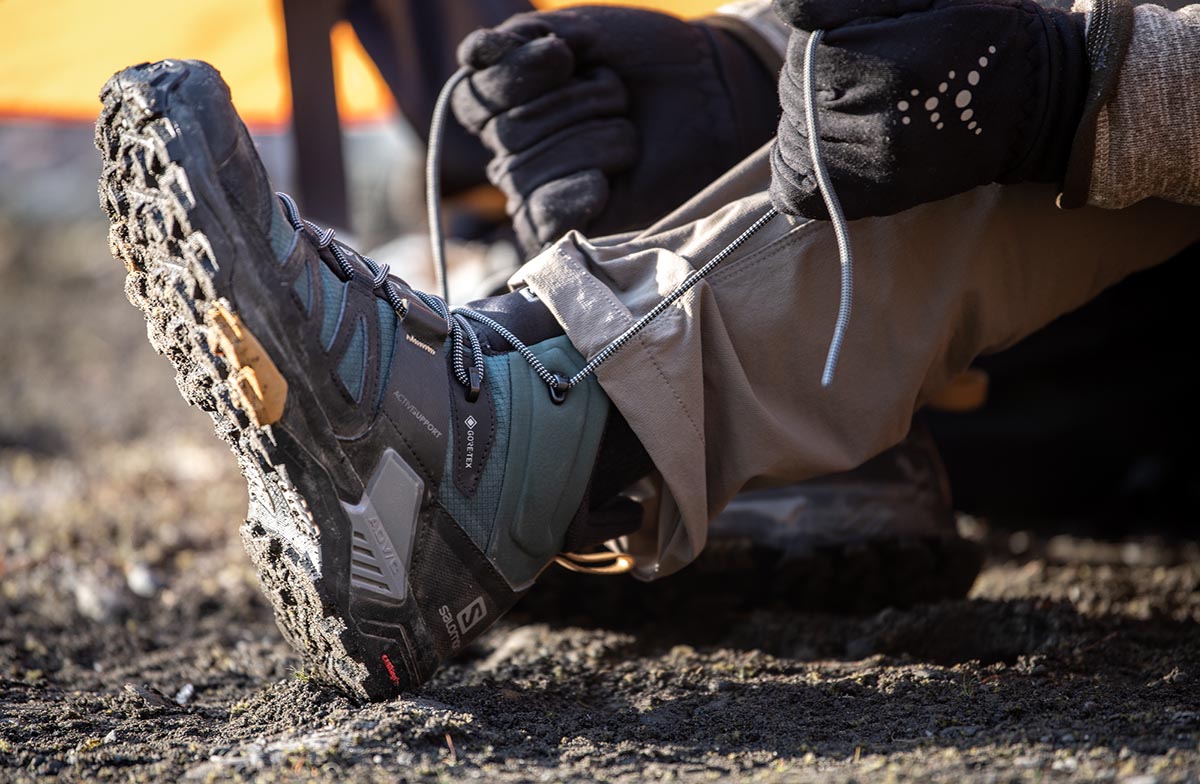
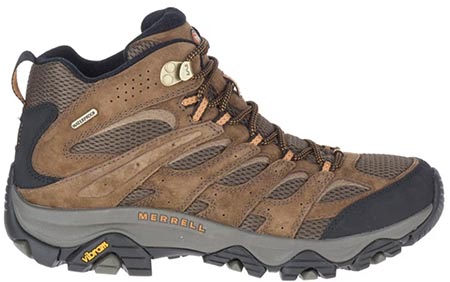 Category: Light/midweight
Category: Light/midweight
Weight: 2 lb. 0.7 oz.
Waterproof?: Yes (M Select DRY)
What we like: Standout price for a proven and extremely comfortable day hiking boot.
What we don’t: Lacks the nimble feel of many modern alternatives.
For day hikers and lightweight backpackers who stick mostly to maintained trails, our top value pick is the Merrell Moab 3. What makes this boot so popular is its foot-friendly, comfortable feel, and reliable trail chops at such a reasonable price. For $150 you get great cushioning underfoot and around the collar, trusty Vibram outsoles, and Merrell’s in-house waterproof membrane. The Moab was updated to the "3" a while back, but they didn't fuss much with the proven design. No need to fix what isn't broken. Notable changes include greater use of recycled fabrics—including the mesh lining and laces—and slightly more aggressive traction.
What are the downsides of the Moab 3 Mid WP? Compared to some of the pricier models on this list, the boot is lacking in support for carrying a heavy load or scrambling on rocky or rough trails. Second, it feels heavier than its actual weight: All the cushioning and thick materials make the boot feel clunky and dated when compared to a nimble and modern alternative like the X Ultra 4 above or Hoka's Anacapa 2 below. But for a significant discount, the Moab offers the right mix of comfort and performance for many day and weekend adventures. And if you prefer a non-waterproof design, the standard Moab 3 Mid is an equally great value at $130.
Read more: men's Moab 3 Mid WP review
See the Men's Merrell Moab 3 Mid WP See the Women's Merrell Moab 3 Mid WP
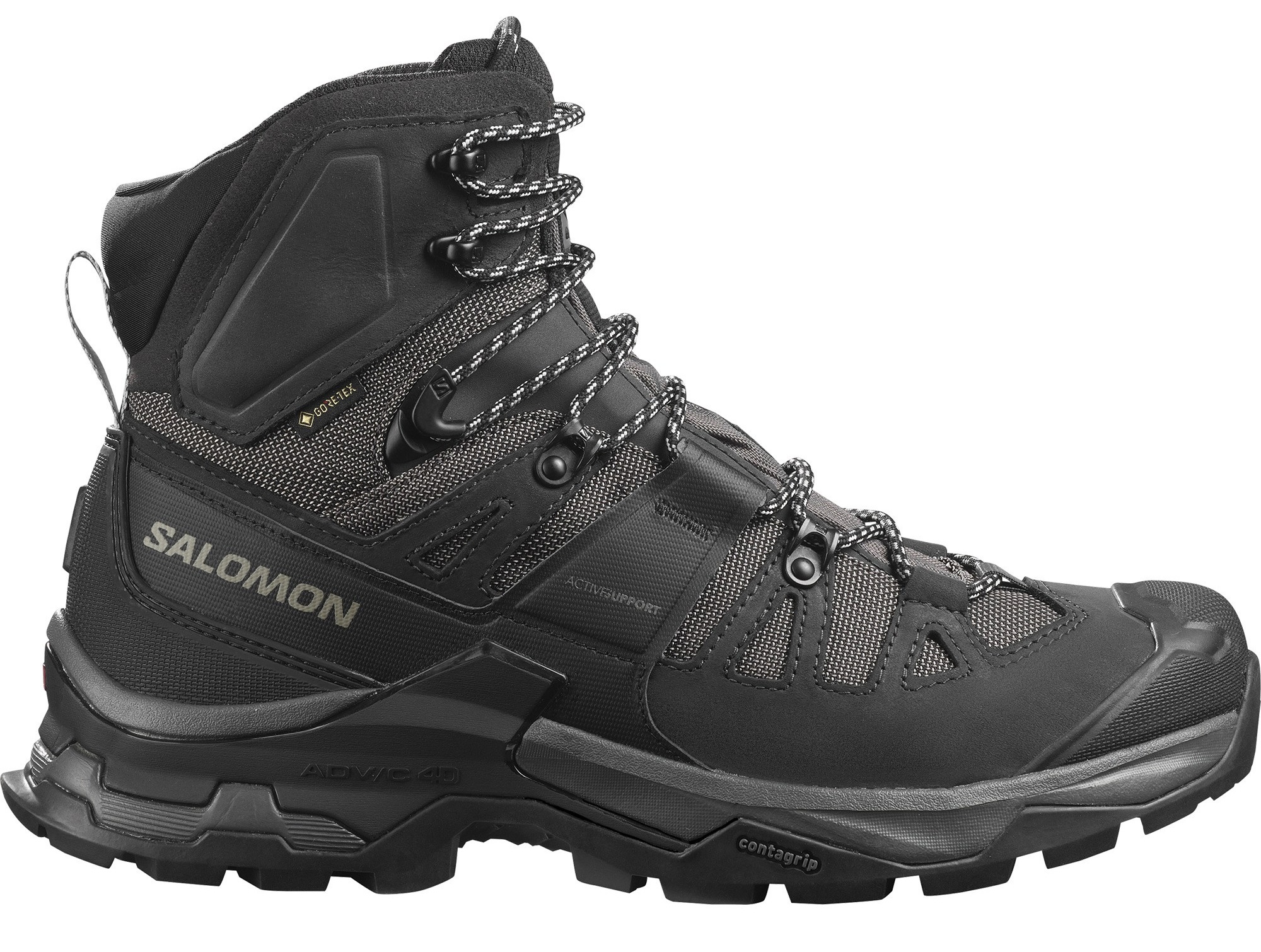 Category: Mid/heavyweight
Category: Mid/heavyweight
Weight: 2 lb. 14.2 oz.
Waterproof?: Yes (Gore-Tex)
What we like: Tough, protective, and supportive yet comfortable; excellent lacing system.
What we don't: A bit heavy and overkill for most day hiking; durability issues for some users.
If you’re in the market for a tough boot for serious day hiking and backpacking, Salomon’s Quest 4 GTX is the whole package. The fourth generation of the line features a top-notch performance fit, aggressive stance, and one of our all-time favorite lacing systems—the eyelets at the base of the ankle do an excellent job locking your heel in place. In addition, the latest model has a modernized yet very durable upper, and the cushioning and protection underfoot impressed us on rocky trails, when hauling a heavy load, and on high-mileage days. Taken together, the Quest is a burly boot that truly excels in the backcountry.
Despite trimming off about an ounce per boot from the previous version (comparing men’s size 9 models that we tested), the Quest 4 still sits solidly in our midweight category. The boot is a bit overbuilt for people that don’t need the extra protection or want to move fast and light on well-maintained trails. Those folks will be better off with a lighter and nimbler boot option like Salomon's own X Ultra 4 Mid GTX above. But for those who are psyched on demanding hikes, backpacking trips that feature steep climbs, and off-trail adventuring while carrying a full pack, the Quest is a solid contender. Of note: A striking number of users have had durability issues, particularly with the sole, but so far, that hasn't been our experience through multiple rounds of testing.
Read more: men's Salomon Quest 4 review
See the Men's Salomon Quest 4 GTX See the Women's Salomon Quest 4 GTX
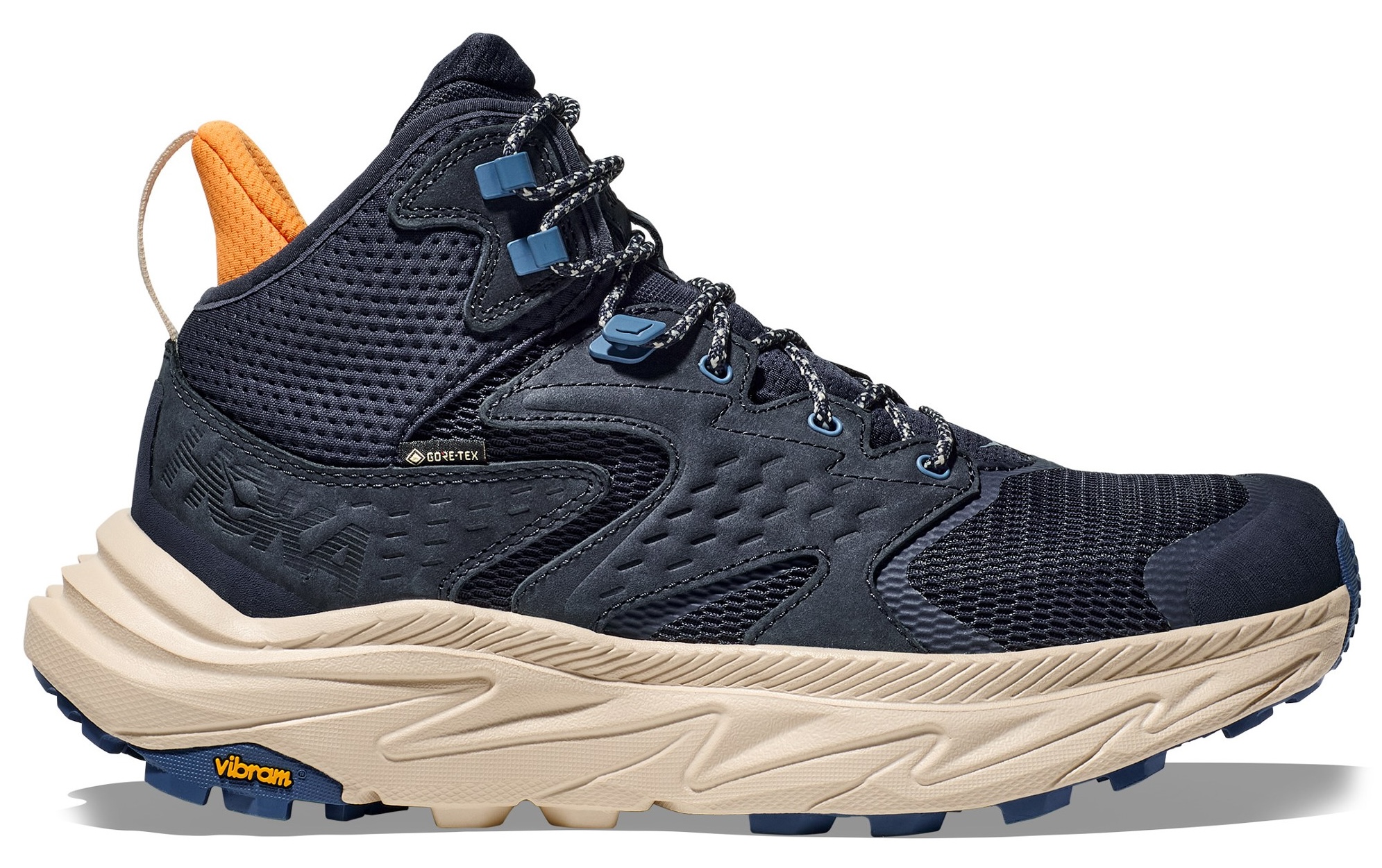 Category: Lightweight
Category: Lightweight
Weight: 2 lb. 4.0 oz.
Waterproof?: Yes (Gore-Tex)
What we like: Extremely cushioned and comfortable, excellent fit, and smooth ride.
What we don’t: We still have some durability concerns with the outsole; swallowtail heel is a little polarizing.
Since their inception, Hoka has churned out futuristic designs with cutting-edge tech—and the Anacapa 2 carries the torch. Two separate editors recently tested the low-top and mid-height versions of the “2” in Zion National Park and on a backpacking trip in Patagonia, and we’re happy to report that the latest iteration is even more competitive than the original. As expected from a Hoka design, the Anacapa feels great on the trail with generous cushioning and a rockered sole that promotes a smooth and fast-moving personality. It also boasts an excellent fit that’s secure but with enough space to account for natural foot swelling, is made with high-quality materials, including a durable Nubuck leather upper and tacky Vibram Megagrip outsole, and offers solid protection and support for such a light and agile design. Though we approached the eccentric silhouette with caution, the boots made quite an impression on us.
Our main concern with the original Anacapa was the longevity of its outsole. We’re happy to report that Hoka did make improvements to the latest version by reducing the amount of blown rubber—an air-injected, foam-like compound common on road running footwear—on the bottom of the sole, although we wish they had outfitted the “2” with a full rubber outsole. We also found the laces below the top two eyelets notably stiff and difficult to snug down over the top of the foot, and the protruding SwallowTail heel can sometimes snag on rocks and roots (or even your other foot). But overall, we think the latest iteration is a nice improvement over the original, including the use of recycled materials and leather certified to the highest standard by the Leather Working Group. If you stick mostly to established trails and prioritize cushy comfort and a nimble feel, the Anacapa is well worth a try.
Read more: men's Hoka Anacapa 2 Mid GTX review
See the Men's Hoka Anacapa 2 Mid GTX See the Women's Hoka Anacapa 2 Mid
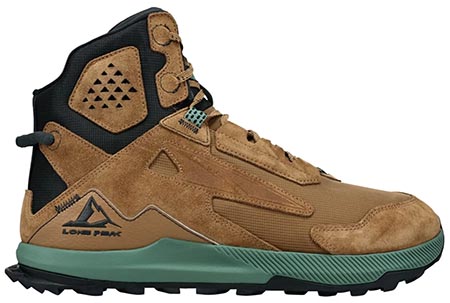 Category: Lightweight
Category: Lightweight
Weight: 1 lb. 9.6 oz.
Waterproof?: No (available)
What we like: The comfort and mobility of a trail running shoe with added durability and support.
What we don’t: Can feel sloppy on technical terrain; many user reports of this version running narrow.
Altra’s Lone Peak trail running shoes have developed a serious following among thru-hikers, making the streamlined boot version an intriguing concept. Combining an ankle-height design with the Lone Peak’s trademark wide toe box, generous cushioning, and zero-drop profile, the Hiker 2 offers instant comfort (we experienced no break-in period) alongside a bit of extra support and coverage. Further, at 1 pound 9.6 ounces, it’s far and away the lightest boot here, which is a game changer for high-mileage days. We’ll admit that we were initially skeptical about the hiking-boot-meets-trail-runner design, but we found the Lone Peak Hiker 2 to be a surprisingly capable piece and consider it a great lightweight option for those who stick to the trail.
However, as a more serious backcountry boot, the Lone Peak Hiker 2 has several compromises. The design showed its weaknesses for us while backpacking in Patagonia—on off-camber terrain, the fit was sloppy and hard to trust, and toe protection fell far short. Further, the zero-drop design means the Altra feels more like a mountain slipper than a technical mountain boot, and ankle protection and support don’t measure up to the taller designs here. But if you’re prone to blisters or unhappy feet, you’d be hard-pressed to find better comfort, and the freshly updated Hiker 2 is more durable with a plush suede upper. Compared to Altra’s taller and waterproof Lone Peak All-Wthr Mid 2, we appreciate the Hiker’s more hardwearing design and think of it as the better option for fair-weather hiking on easy trails. Finally, we feel it's important to note that for many users—especially those who have come to love Altra's wider profile—this version of the Hiker runs narrow. We recommend trying the boots on before you hit the trail.
Read more: women's Lone Peak Hiker 2 review
See the Men's Altra Lone Peak Hiker 2 See the Women's Altra Lone Peak Hiker 2
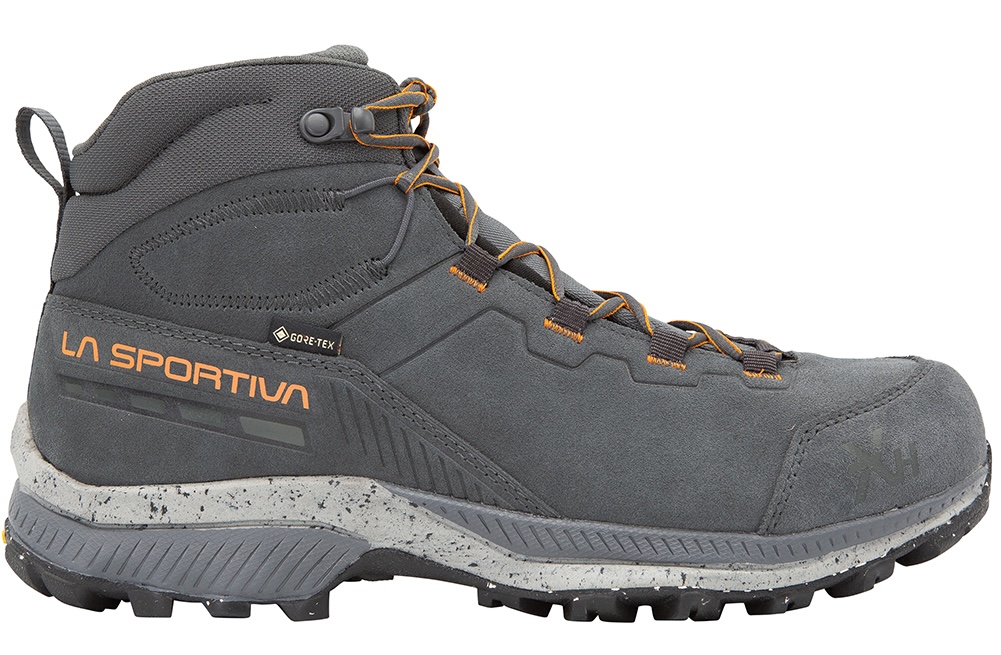 Category: Light/midweight
Category: Light/midweight
Weight: 1 lb. 15.0 oz.
Waterproof?: Yes (Gore-Tex)
What we like: A great blend of an approach shoe and lightweight hiking boot.
What we don’t: Some may prefer a little more stiffness and support.
La Sportiva’s TX approach shoe line has long been a sneaky favorite among the hiking crowd—the low-top TX4 has been in our hiking shoe round-up for years. But they leaned into the hiking and backpacking space even more with the new TX Hike Mid Leather. Like its approach shoe sibling, the TX Hike has a relatively roomy toe box and prioritizes comfort. We wore the boot out of the box on the Ptarmigan Traverse—a classic multi-day mountain traverse in Washington’s Glacier Peak Wilderness—and were happy with the mix of grip, agility, toughness, and cushioning. It was clear this was the boot’s ideal application: hauling a pack through rocky and technical cross-country terrain—landing it a spot as our favorite boot for fast-and-light mountain adventures.
What about the TX Hike’s downsides? For those who like a stiff and highly supportive setup, this boot may not do the trick. The leather upper grew softer and more flexible with use, and the collar sits lower than alternatives like the Salewa Mountain Trainer Lite below. The flip side to the broken-in feel is the boot has standout comfort—we had zero complaints even at the end of the trip. Additionally, as we touched on above, it fits noticeably wide, which could be a problem for those with narrow and/or low-profile feet (it worked great for us, though). All told, we think La Sportiva cooked up another winner in the TX Hike, blending approach shoe performance with the added height and comfort of a hiking boot.
Read more: women's La Sportiva TX Hike review
See the Men's La Sportiva TX Hike See the Women's La Sportiva TX Hike
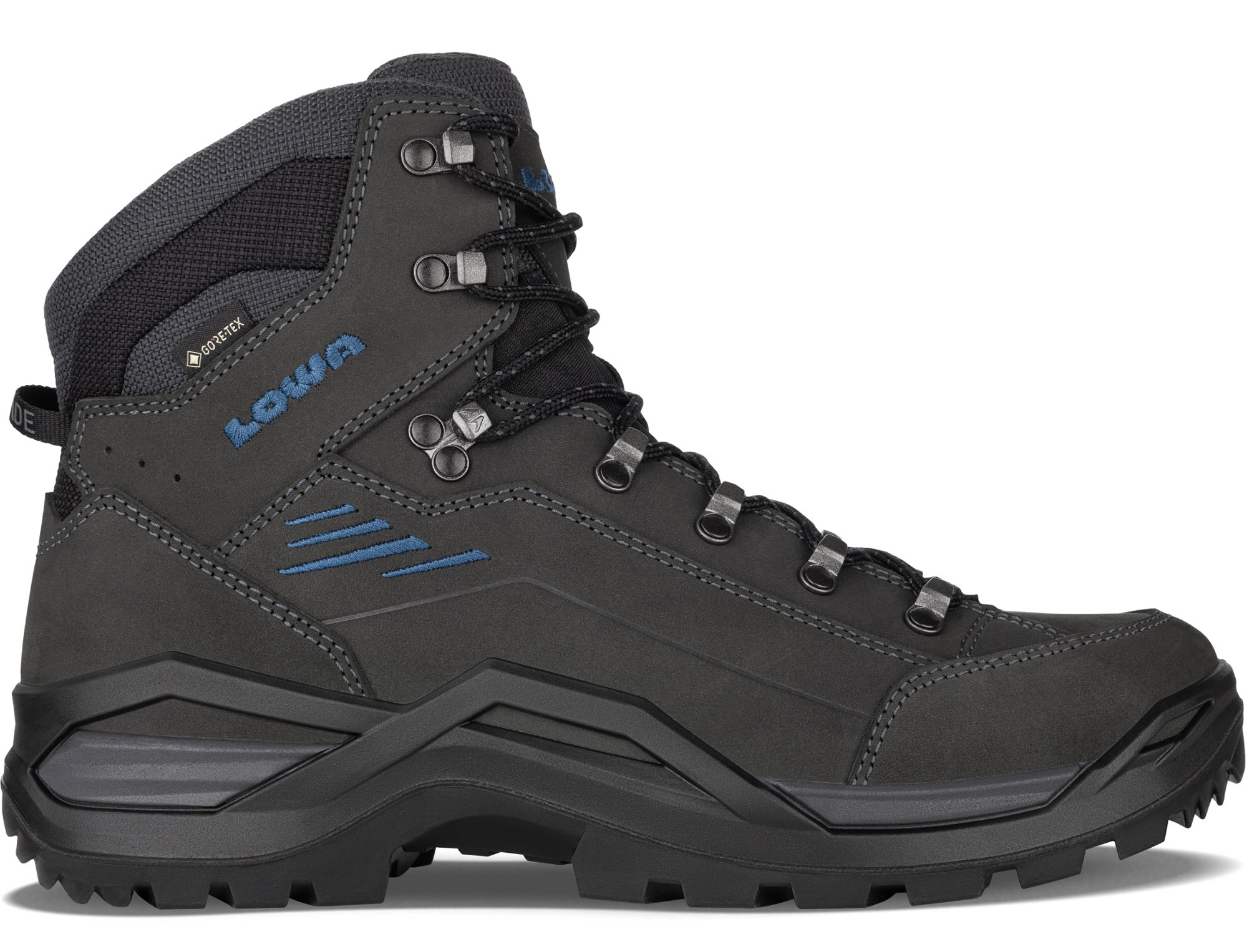 Category: Midweight
Category: Midweight
Weight: 2 lb. 9.6 oz.
Waterproof?: Yes (Gore-Tex)
What we like: A classic backpacking choice with a surprisingly low weight for the comfort and support.
What we don’t: Not the toughest construction.
The Lowa Renegade has the look and feel of a traditional hiking boot at a relatively low weight. Unlike the more aggressive and modern Quest above, the Nubuck leather Renegade offers better isolation from the ground and feels more planted and sturdy. It does give up a little of the fun factor and performance fit of the Quest, but the tradeoff is worth it for those carrying a heavy pack or wanting more underfoot protection from rocky trails. The most recent Renegade iteration features a retooled upper to reduce pressure points, and an updated midsole and outsole for a boost in comfort and support.
Lowa kept the weight down in part by moving some of the stabilizing duties to a very effective external "Monowrap" polyurethane frame. This makes the Renegade perform like a true backpacking boot while weighing just over 2.5 pounds for the pair. Further, the leather upper is relatively thin, which saves ounces and reduces break-in time. The sacrifice of all this lightening is a lack of long-term durability—high-mileage users have reported needing a new pair nearly every year. But many keep coming back for the comfortable feel and the right balance of weight and support. And it’s easy to find a good fit as the Renegade is made in regular and wide widths. Note: the new Renegade Evo is only available directly from Lowa or for REI members at the time of publishing.
Read more: men's Lowa Renegade GTX Mid review (previous model)
See the Men's Lowa Renegade Evo See the Women's Lowa Renegade Evo
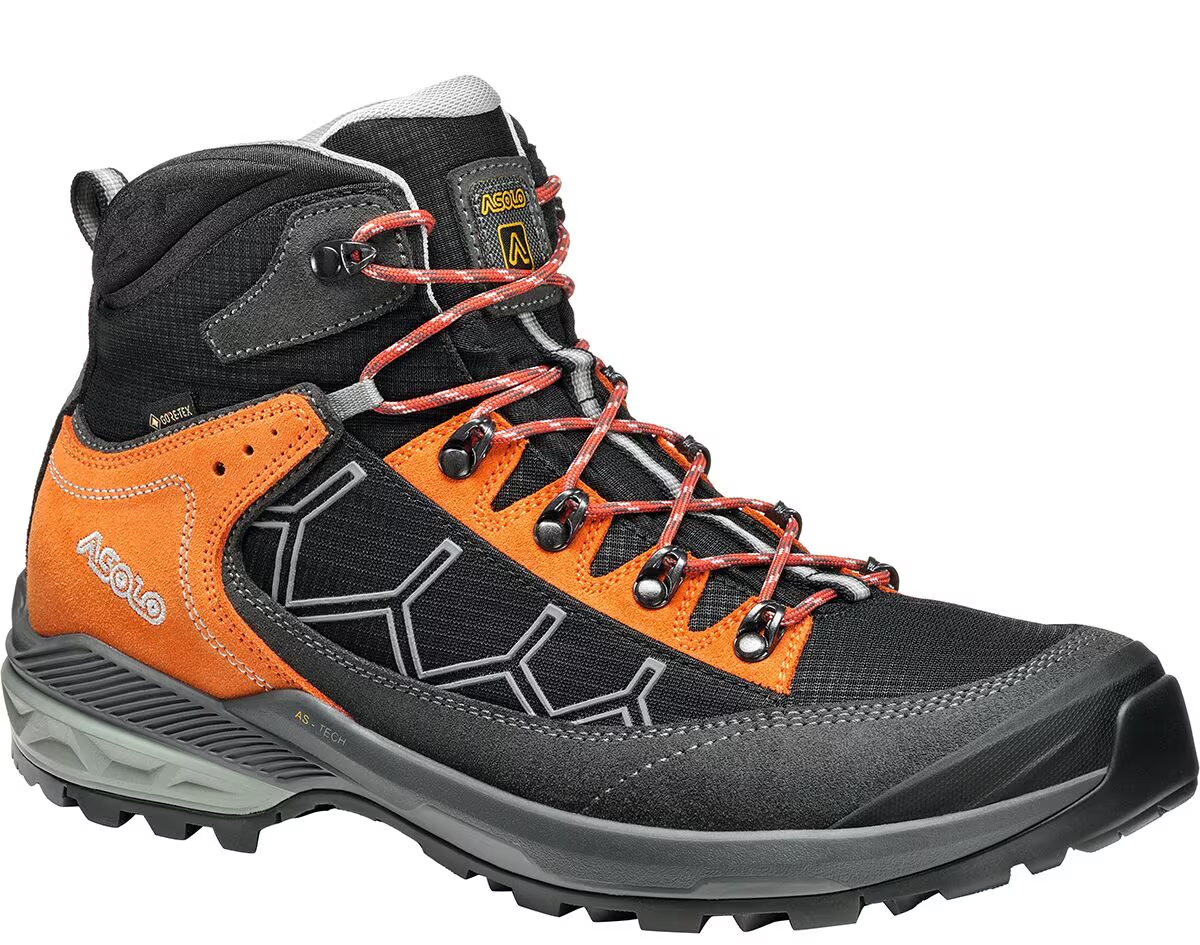 Category: Lightweight
Category: Lightweight
Weight: 2 lb. 2.6 oz.
Waterproof?: Yes (Gore-Tex)
What we like: Well built, extremely comfortable and tough, and competitively light.
What we don't: Very pricey and not quite as supportive as some of the heavier boots on this list.
When we think of Asolo, the first thing that comes to mind is a classic, leather hiking boot like their TPS 520 GV Evo. The sleeker and more modern Falcon Evo GV, however, represents where hiking footwear clearly is headed: less weight and support than a traditional hiking boot but with serious technical chops. We recently took the updated Falcon Evo GV on and off trail over the course of a rugged trek in Patagonia and came away impressed. It's well built, extremely comfortable right out of the box, and can handle just about anything you throw at it. We honestly didn't feel like it needed any breaking-in period, as we experienced zero hotspots while logging significant miles in the backcountry.
The lighter weight does come at a cost, however: The biggest downside in choosing the Asolo Falcon Evo GV is less stability and support. If you're used to a high-cut boot with tons of support, the Falcon isn't it—we found ourselves constantly wishing for a second eyelet and a smidge more height. Still, laced up tight, we wore it backpacking with a relatively heavy load over all types of terrain with few issues. Speaking of the laces: We did find that they tend to come untied easier than other models we've tested, so plan on double-knotting. At the end of the day, for those who don't need the ultimate levels of stability and want a lightweight and comfortable do-all boot for everything from day hiking to more serious backpacking, we love the Falcon Evo GV.
Read more: men's Asolo Falcon Evo GV review
See the Men's Asolo Falcon Evo GV See the Women's Asolo Falcon Evo GV
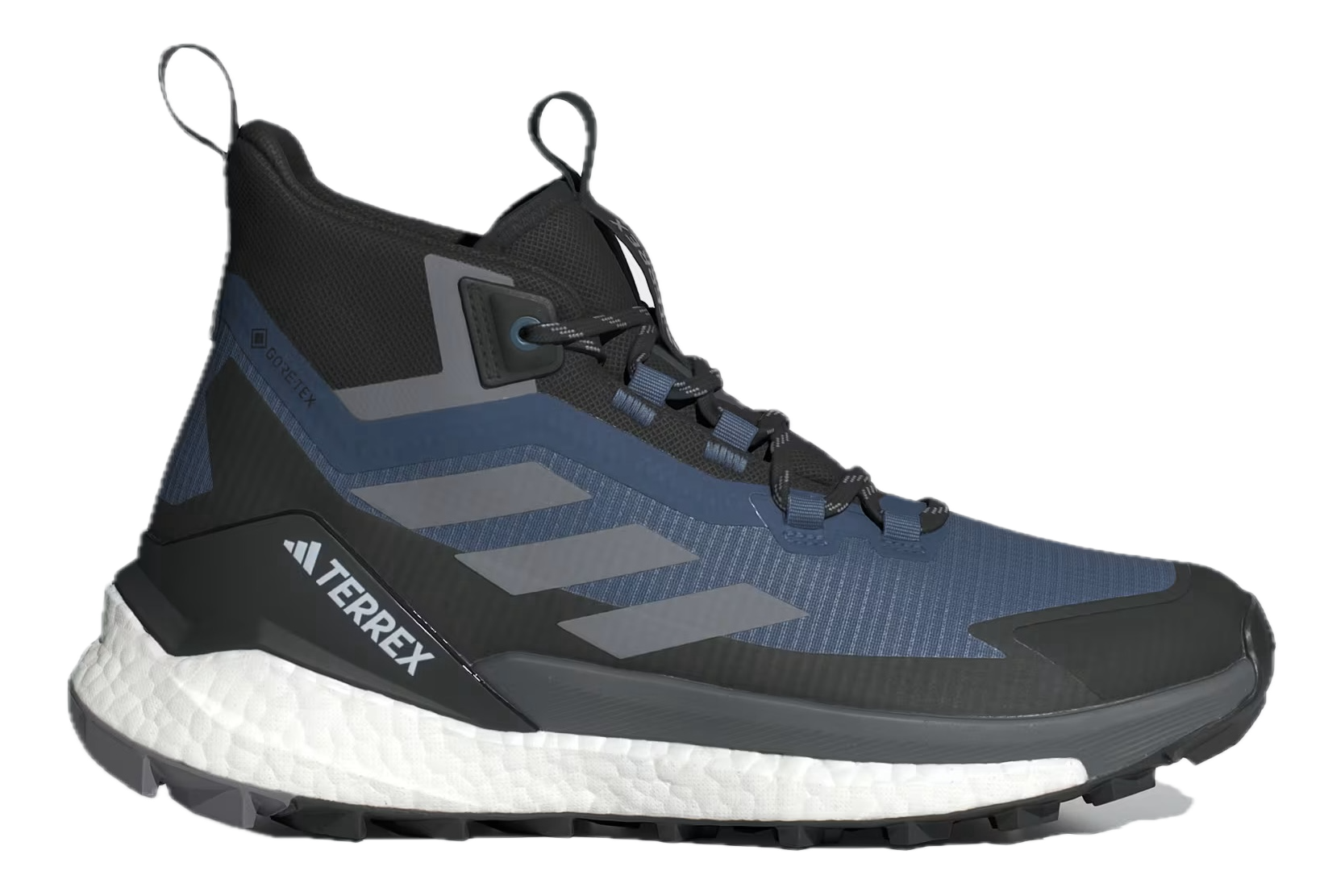 Category: Lightweight
Category: Lightweight
Weight: 1 lb. 15.4 oz.
Waterproof?: Yes (Gore-Tex)
What we like: Looks do deceive—this is a capable and great-fitting boot.
What we don’t: Durability concerns with the exposed midsole.
It’s always fun to be pleasantly surprised by a piece of gear, and the Adidas Terrex Free Hiker 2 did just that. At first glance—or fifth—the boot looks nothing like an outdoor-ready piece. But after sliding them on, our impression quickly changed. The Free Hiker has a sock-like fit that’s super comfortable with great cushioning on the tongue and collar, and the soft Boost midsole does a great job limiting foot fatigue even on demanding days. Throughout our testing, traction also proved to be excellent on everything from wet rock to loose dirt, thanks to the tacky Continental rubber and aggressive lug shape. Competitively lightweight (just over 2 lb. for our men’s size 9) and with a proven Gore-Tex liner, the Free Hiker is a great addition to the market.
The Terrex Free Hiker 2 was a fantastic technical day hiking option on a trip to Patagonia, but it does come with some limitations. The most polarizing is its looks, which land in the love-it-or-hate-it category. A second more substantive concern is durability. Specifically, Adidas opted to leave its Boost foam midsole quite exposed along the outside of the boot. After just a few hikes—albeit on very rocky terrain that involved a fair amount of scrambling and squeezing between boulders—pieces of that exposed midsole were starting to fall off in small chunks. It’s a big enough downside to drop the boot a little on our list, but as a fun day hiker or for lightweight backpacking, the Adidas is well worth a look.
Read more: men's Adidas Free Hiker 2 GTX review
See the Men's Adidas Free Hiker 2 See the Women's Adidas Free Hiker 2
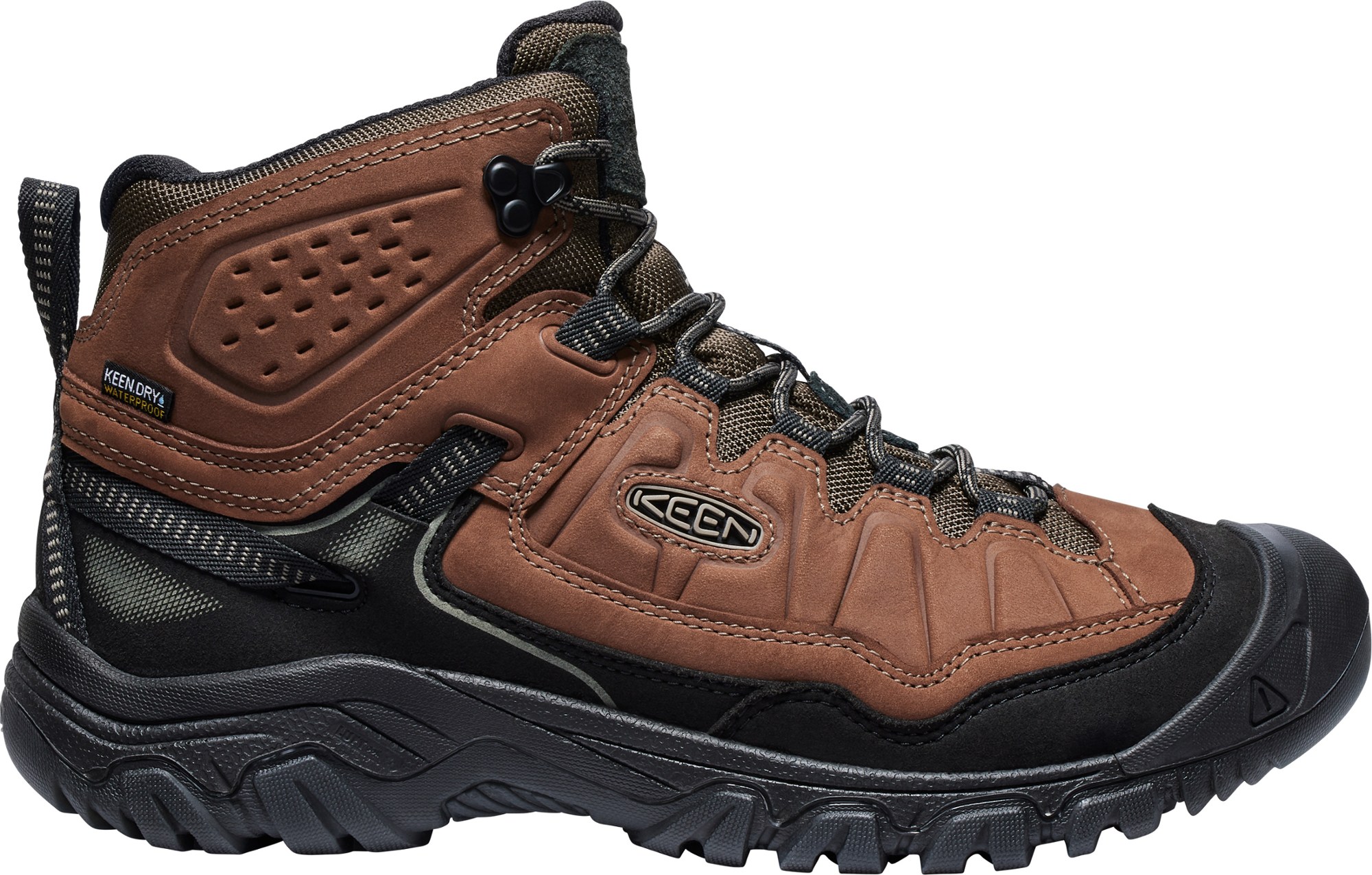 Category: Midweight
Category: Midweight
Weight: 2 lb. 8.7 oz.
Waterproof?: Yes (Keen.Dry)
What we like: An affordable option with a tough leather upper.
What we don’t: Not very secure on rough trails; no longer considered a lightweight boot.
With great out-of-the-box comfort, the Keen Targhee line is an extremely popular boot for day hiking and easy to moderate backpacking trips. The boot has a surprisingly tough build with a generously sized toe cap and Nubuck leather upper, a moderately wide fit, and a collar height that sits just high enough on the ankle to provide decent rollover protection. Keep in mind that the Targhee still is a clear step down in stability and ankle support from a design like the Lowa Renegade Evo above, but it offers sufficient stability and grip for most subalpine adventures—at a significantly lower price point to boot. Finally, we appreciate that Keen recently upped the sustainability focus by incorporating recycled laces and more responsibly produced leather. They also boosted durability with a new compression-resistant midsole and beefier outsole, which we think are excellent improvements over the past-generation III (and worth the 5.9-oz. weight penalty).
The Targhee’s main competitor is the Merrell Moab 3 above, and both models have been top sellers for years. The Targhee is more durable overall with its full leather construction, but the Moab is lighter by around 8 ounces per pair, has more cushioning, and keeps you cooler with its mesh-heavy design. The price and comfort differences are still significant enough to give the edge to the Moab on our list, but the Targhee remains a solid choice, and particularly for those with wide feet. For those looking to save, the Targhee III is still available at a discount while supplies last.
Read more: men's Keen Targhee III review
See the Men's Keen Targhee IV WP See the Women's Keen Targhee IV WP
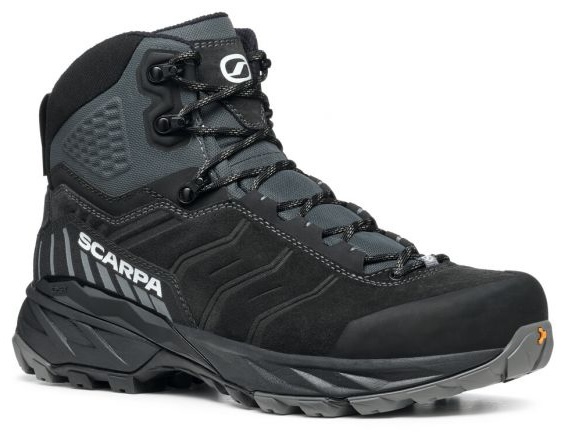 Category: Midweight
Category: Midweight
Weight: 2 lb. 7.2 oz.
Waterproof?: Yes (Gore-Tex)
What we like: Protective, supportive, durable, and impressively agile.
What we don’t: Overbuilt for day hikes on well-maintained trails.
Scarpa’s Rush series of hiking footwear seeks to find the sweet spot between performance and weight savings, running the gamut from trail runner-inspired hiking shoe (the Rush Low) to the TRK GTX here. We took this boot on a trek through the Cordillera Huayhuash in Peru, where the boot traveled with ease across tricky mountain terrain while still maintaining a light and nimble feel underfoot. The Rush was also the steed of choice for another editor while backpacking in Kenya. Bushwhacking across a rugged mountain range, he lauded the TRK's ability to offer stellar support and durability while still feeling surprisingly agile. The suede leather upper and rubber toe rand offer top-notch durability and protection, and the sticky SuperGum outsole gets the job done over a wide variety of surfaces. Finally, moisture protection is excellent, with a waterproof/breathable Gore-Tex liner and tall collar to keep you covered during high water crossings.
We used to rank Scarpa’s Zodiac Plus GTX (below) high on this list, but the Rush TRK GTX wins out in most categories. The Rush is noticeably more supple than the Zodiac, features a roomy toe box that promotes great out-of-the-box and all-day comfort, and offers softer cushioning underfoot—all for a substantial $100 less. For all but the most aggressive mountain terrain, it’s by far the more approachable design. That said, the Rush is still overbuilt for easy trails, especially compared to many of the lightweight designs here. For those sticking to more gentle terrain, check out Scarpa’s lighter and nimbler Rush Mid 2 GTX. Otherwise, if you’re headed above treeline with a heavy pack, the Rush TRK GTX is well worth a look.
Read more: women's Scarpa Rush TRK GTX review
See the Men's Scarpa Rush TRK GTX See the Women's Scarpa Rush TRK GTX
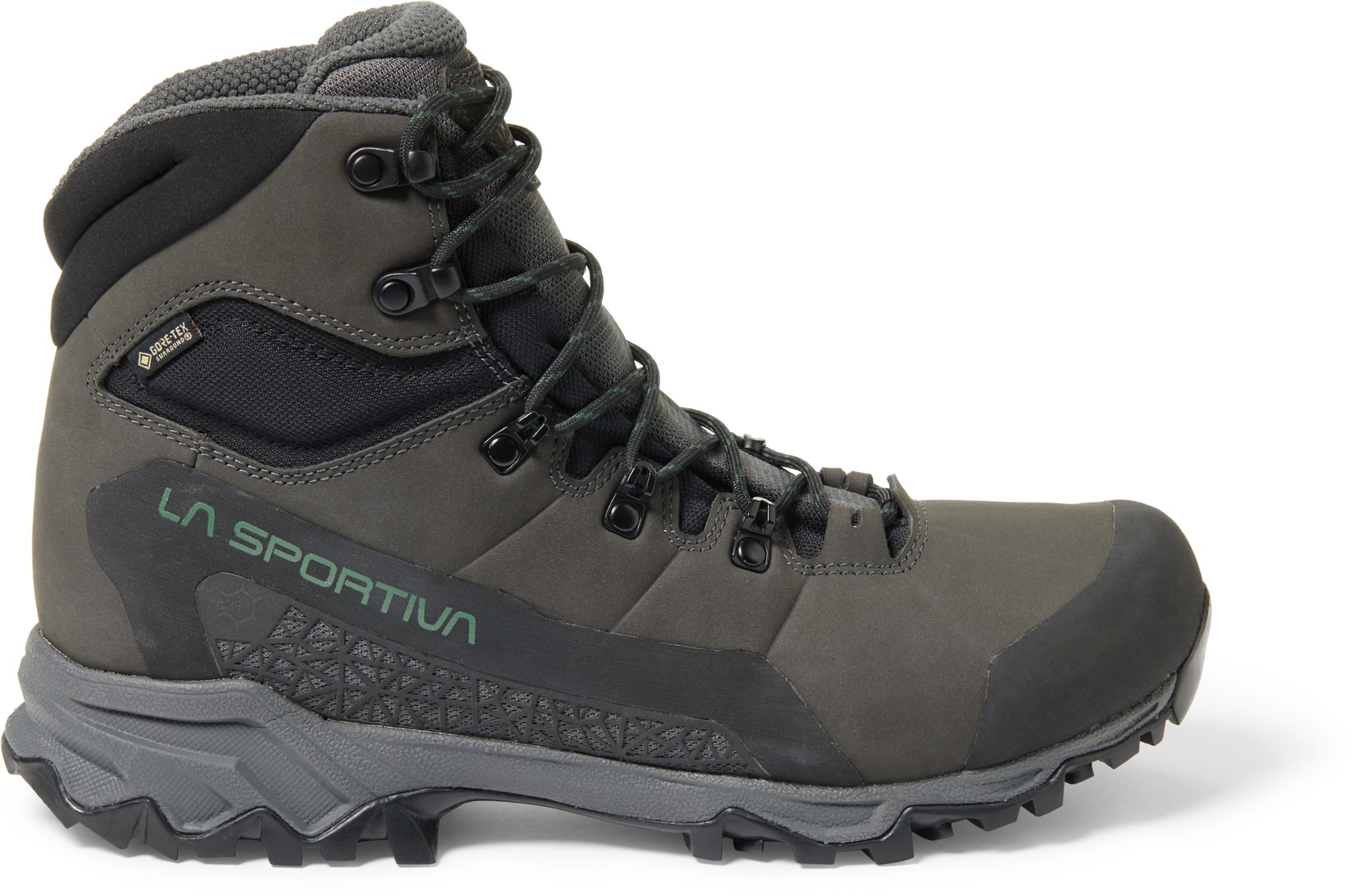 Category: Light/midweight
Category: Light/midweight
Weight: 2 lb. 1.6 oz.
Waterproof?: Yes (Gore-Tex Surround)
What we like: Light, pretty tough, and comfortable for backpacking.
What we don’t: Runs narrow (although wide sizes are available) and only moderate levels of support and protection.
La Sportiva’s Nucleo High II GTX is a quintessential modern boot: light and nimble but with enough support for day hiking and most backpacking trips. Its most notable features are the Gore-Tex Surround liner and Nano-Cell technology. The Nano-Cell elements are the web-like mesh along the sides which give the boot a distinctive look—though these cutouts only seem to have a modest impact on breathability. However, the Gore-Tex Surround helps the Nucleo breathe not only out of the top of the foot like a traditional waterproof design, but also through the bottom of the footbed and out the sides.
Where the Nucleo truly differentiates itself from other 2-pound models is durability: The boot has large swaths of leather rather than mesh for scrambling and hiking over rough terrain. You get moderate flexibility from its mid-height design, so it doesn’t require an extensive break-in, and traction is excellent over rock and mud. All told, the Nucleo is a nice upgrade in performance and build quality from a boot like the Merrell Moab 3 above, albeit at a substantially higher price. Keep in mind that this boot has a narrow fit, although the good news is that wide sizes are available for both men and women.
Read more: men's La Sportiva Nucleo High II GTX review
See the Men's La Sportiva Nucleo High II See the Women's La Sportiva Nucleo High II
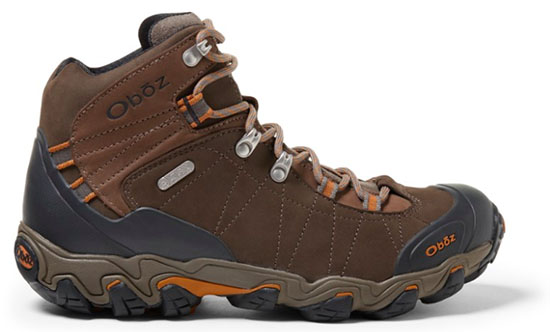 Category: Midweight
Category: Midweight
Weight: 2 lb. 6.0 oz.
Waterproof?: Yes (B-Dry)
What we like: Sturdy and supportive for the price; quality insole included.
What we don’t: Feels a bit slow and heavy on the trail.
Based in Bozeman, Montana, Oboz has a reputation for making tough, comfort-first footwear. Our favorite over-the-ankle design from their lineup is the Bridger Mid, which, in many ways, is a beefed-up version of the Keen Targhee IV above. It’s nicely cushioned and protective underfoot, including TPU reinforcements and a nylon shank, but lacks the lightness and flexibility of many modern options. The upside is that the boot is stable and supportive—the leather upper can withstand a lot of abuse, and the midsole reinforcements give the boot a planted feel. For anything from weekend backpacking trips to snowshoeing in the winter, the Bridger Mid Waterproof is a comfortable choice.
What’s not to like with the Oboz Bridger? On the trail, the boot feels slower and heavier than competitors like the Merrell Moab 3 Mid or Keen Targhee IV Mid (the Bridger's chunky tread underfoot doesn't help). Further, the in-house B-Dry waterproof membrane makes the boot run warm even in moderate temperatures. For a cheaper option from Oboz, the Sawtooth X is another mid-height boot that has more mesh in the build, but it’s less tough and supportive at a similar weight (although you do save $20 in the process). For those hiking in hot and dry conditions, both the Bridger and Sawtooth are made in non-waterproof versions as well.
Read more: men's Oboz Bridger Mid BDry review (previous version)
See the Men's Oboz Bridger Mid WP See the Women's Oboz Bridger Mid WP
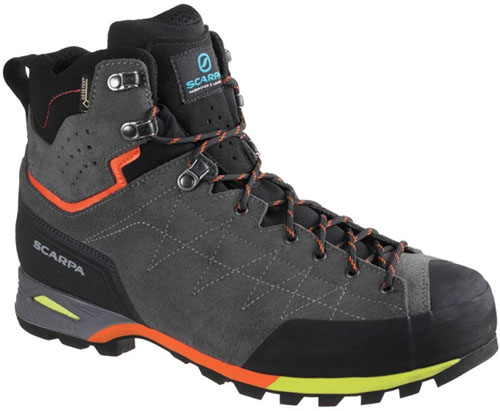 Category: Midweight
Category: Midweight
Weight: 2 lb. 6.4 oz.
Waterproof?: Yes (Gore-Tex)
What we like: Reasonably light but stiff enough for backpacking over rough terrain.
What we don’t: Very expensive and overkill for maintained or moderate trails.
For a trek over the harsh terrain of Peru’s Cordillera Huayhuash, we turned to Scarpa’s Zodiac Plus. This boot mixes approach shoe-like traction on rock and boulders with the toughness and stability of a lightweight mountaineering boot, which is quite a combination. Over a brutal 10 days of on and off-trail hiking while shouldering a heavy pack, the Zodiac impressed: The semi-stiff build, high-quality construction, and solid protection provided a lot of confidence on steep climbs and sketchy descents.
Among tough and serious hiking boots, the Zodiac Plus and Salewa Mountain Trainer 2 Mid GTX (the heavier counterpart to the Mountain Trainer Lite outlined below) are two of the best. The Zodiac is more comfortable out of the box, weighs around 4 ounces less for the pair, and is a bit more flexible for covering ground quickly, but the Mountain Trainer’s stiffer build and 360-degree rubber rand offers even better protection in the alpine. Depending on your needs, both are mountain-ready waterproof designs that should get the job done.
Read more: women's Scarpa Zodiac Plus review
See the Men's Scarpa Zodiac Plus See the Women's Scarpa Zodiac Plus
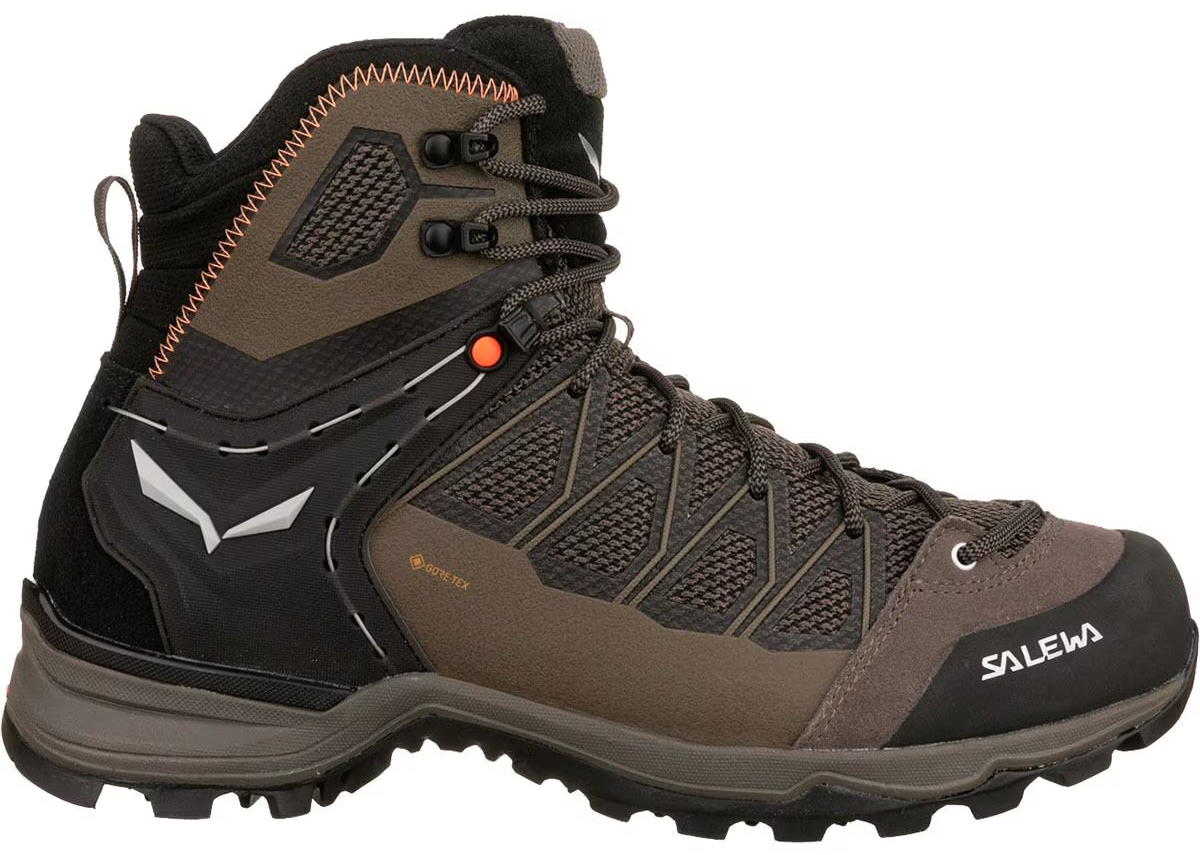 Category: Midweight
Category: Midweight
Weight: 2 lb. 7.9 oz.
Waterproof?: Yes (Gore-Tex)
What we like: Comfortable and reasonably light for such a capable, alpine-ready boot.
What we don’t: Sacrifices a little protection and coverage; tall stack height takes some getting used to.
Salewa is well known in the mountaineering world for their technical alpine boots, but not everyone needs an exceptionally stiff and burly design. Enter the Mountain Trainer Lite Mid GTX, which takes their classic Mountain Trainer 2 Mid and trims things down for a lighter and more streamlined ride. Importantly, the Lite retains most of the mountain-readiness we love about the standard version but with wider appeal for most recreational hikers: It’s highly comfortable out of the box with a well-cushioned build and soft materials throughout, offers a good mix of flexibility and stability, and provides surprisingly good arch support. Final highlights include a well-executed lacing system that effectively locks down the ankle and back of the foot, climbing-inspired Pomoca outsole, and solid support and durability for covering technical terrain with a full pack—all for a very reasonable 2.5 pounds.
Like most weight-conscious designs, however, the Salewa Mountain Trainer Lite Mid GTX does make some concessions to keep things light. The biggest is protection: While the approach shoe-like rubber toe cap provides decent coverage at the front of the foot, it’s noticeably thinner and less comprehensive than the standard model’s 360-degree design. Medial foot protection (around the inside of the ankle) is also pretty minimal, which led to some rock strikes on steeper and more aggressive inclines, and the lower collar can allow water, snow, and debris to creep in over top. A final downside is the tall stack height (40mm at the heel and 25mm at the forefoot), which takes some getting used to but provides great isolation from harsh ground. In the end, the Mountain Trainer Lite is a relatively niche option with a steep price tag, but it hits a nice middle ground between lightweight, trail runner-inspired designs and more aggressive alpine boots like the Zodiac Plus above.
Read more: men's Salewa Mountain Trainer Lite Mid GTX review
See the Men's Salewa Mountain Trainer Lite See the Women's Salewa Mountain Trainer Lite
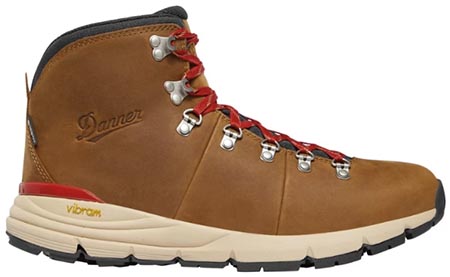 Category: Light/midweight
Category: Light/midweight
Weight: 2 lb. 4.0 oz.
Waterproof?: Yes (Gore-Tex)
What we like: Classic Danner looks in a lightweight package—now with the option to resole.
What we don’t: Pricey relative to its on-trail performance.
Danner is best known for their throwback, full-leather boots, but their Mountain 600 Leaf has struck a chord with the day-hiking crowd. The over-the-ankle design is relatively light, surprisingly flexible underfoot, and has a sharp look with a full-grain leather upper and quality lacing hardware. Recently updated, the boot is now part of Danner’s “recraftable” collection, which allows you to send the 600 Leaf in for a resole after the tread has worn down. Additional upgrades include a new and more sustainable Gore-Tex liner (it’s 45% recycled) and a range of color options that include some darker designs along with the traditional tan.
If you prioritize out-of-the-box comfort, styling, and everyday versatility, the Mountain 600 Leaf remains a top boot option for day hikes and occasional backpacking. But at $220 and with only moderate levels of support, it’s a bit of an in-betweener: The Danner can’t hold a candle to the technical performance of the Salomon Quest 4 above, nor is it as light and nimble as modern alternatives like La Sportiva’s Nucleo High II. But the option to resole and extend the life of a pair of boots is well worth celebrating—and will justify the extra cost for some—and it’s hard not to be smitten with the Danner’s classic looks and all-day comfort.
See the Men's Danner Mountain 600 Leaf See the Women's Danner Mountain 600 Leaf
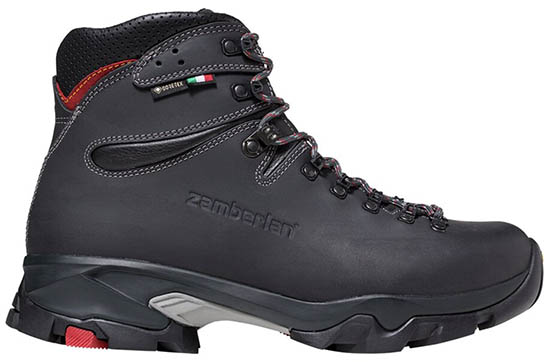 Category: Heavyweight
Category: Heavyweight
Weight: 3 lb. 2.4 oz.
Waterproof?: Yes (Gore-Tex)
What we like: Beautifully made and absolutely bomber on rough terrain.
What we don’t: Dated design that’s very heavy.
The hiking boot market has been trending away from traditional heavyweight leather designs for years, but there’s still a time and place for these classics. In this category, the Zamberlan Vioz GTX is among the all-time greats: The Italian-made leather construction is gorgeous and built to last, the interior is soft and isolates you amazingly well from a rough trail, and the stiff structure provides reliable support. For long slogs with a serious load or even light mountaineering, the Vioz GTX is a proven choice.
Unfortunately for the Vioz, there is a good reason why you see fewer of them on the trail these days. A heavy boot makes it that much harder to cover ground, and at 3 pounds 2.4 ounces, it weighs more than anything else on this list (and certainly feels like it as the miles add up). In the end, we think even serious backpackers will be better off in most cases with a boot like the Salomon Quest 4 above. But the Vioz remains a favorite among traditionalists who want a truly bomber boot that will be your hiking partner for years (you can even resole its Vibram rubber).
See the Men's Zamberlan Vioz See the Women's Zamberlan Vioz
| Boot | Price | Category | Weight | Waterproof? | Upper |
|---|---|---|---|---|---|
| Salomon X Ultra 4 Mid GTX | $175 | Lightweight | 1 lb. 14 oz. | Yes (Gore-Tex) | Leather / textile |
| Merrell Moab 3 Mid WP | $150 | Light/mid | 2 lb. 0.7 oz. | Yes (M Select) | Leather / mesh |
| Salomon Quest 4 GTX | $230 | Mid/heavy | 2 lb. 14.2 oz. | Yes (Gore-Tex) | Leather / textile |
| Hoka Anacapa 2 Mid GTX | $195 | Lightweight | 2 lb. 4.0 oz. | Yes (Gore-Tex) | Nubuck leather |
| Altra Lone Peak Hiker 2 | $150 | Lightweight | 1 lb. 9.6 oz. | No | Synthetic / mesh |
| La Sportiva TX Hike Mid Leather | $199 | Light/mid | 1 lb. 15.0 oz. | Yes (Gore-Tex) | Nubuck leather |
| Lowa Renegade Evo GTX Mid | $265 | Midweight | 2 lb. 9.6 oz. | Yes (Gore-Tex) | Nubuck leather |
| Asolo Falcon Evo GV | $260 | Lightweight | 2 lb. 2.6 oz. | Yes (Gore-Tex) | Suede / nylon |
| Adidas Terrex Free Hiker 2 GTX | $220 | Lightweight | 1 lb. 15.4 oz. | Yes (Gore-Tex) | Synthetic |
| Keen Targhee IV Waterproof | $170 | Midweight | 2 lb. 8.7 oz. | Yes (Keen.Dry) | Nubuck leather |
| Scarpa Rush TRK GTX | $249 | Midweight | 2 lb. 7.2 oz. | Yes (Gore-Tex) | Suede leather |
| La Sportiva Nucleo High II GTX | $239 | Light/mid | 2 lb. 1.6 oz. | Yes (Gore-Tex) | Nubuck leather |
| Oboz Bridger Mid WP | $200 | Midweight | 2 lb. 6.0 oz. | Yes (B-Dry) | Nubuck leather |
| Scarpa Zodiac Plus GTX | $349 | Midweight | 2 lb. 6.4 oz. | Yes (Gore-Tex) | Suede leather |
| Salewa Mountain Trainer Lite | $220 | Midweight | 2 lb. 7.9 oz. | Yes (Gore-Tex) | Synthetic |
| Danner Mountain 600 Leaf Mid | $220 | Light/mid | 2 lb. 4 oz. | Yes (Danner Dry) | Suede leather |
| Zamberlan Vioz GTX | $350 | Heavyweight | 3 lb. 2.4 oz. | Yes (Gore-Tex) | Full-grain leather |
Switchback Travel's team of dedicated trail trotters are no strangers to the sore feet and blisters accompanying long days outside. The brainchild of former editor-in-chief John Ellings, this guide was founded back in 2015. Pulling from years of extensive experience on far-flung expeditions and local romps in the rugged Cascades, he curated our initial selection of 12 hardy boots. Ever since, the Switchback team has tirelessly tested, researched, and abused new and noteworthy models from the moment they hit the market to make sure this round-up represents the most deserving kicks out there. Senior editor Chris Carter took ownership of this guide in 2024. A seasoned thru-hiker and international backpacker, Chris has worn a seemingly permanent groove in his shoulders from schlepping heavy loads across the country—and won’t settle for just any ol’ hiking boot.
Our current list of 17 models represents the crème de la crème of these stalwart boots. To truly test the mettle of each design, we put them through a series of real-world tests on the open trail, keeping a keen eye for durability, weight, support, and stability to help inform our reviews. We tested boots all over the world, from the dusty African savannah to rocky alpine scree fields in Nepal, to ensure our picks fare well in all sorts of terrain. Finally, we know that the competition for the hiking boot podium is fierce and constantly evolving, which is why we've slotted this guide into a regular update schedule to ensure the list stays current and relevant. If you prefer to go even lighter and faster, check out our article on the best hiking shoes.
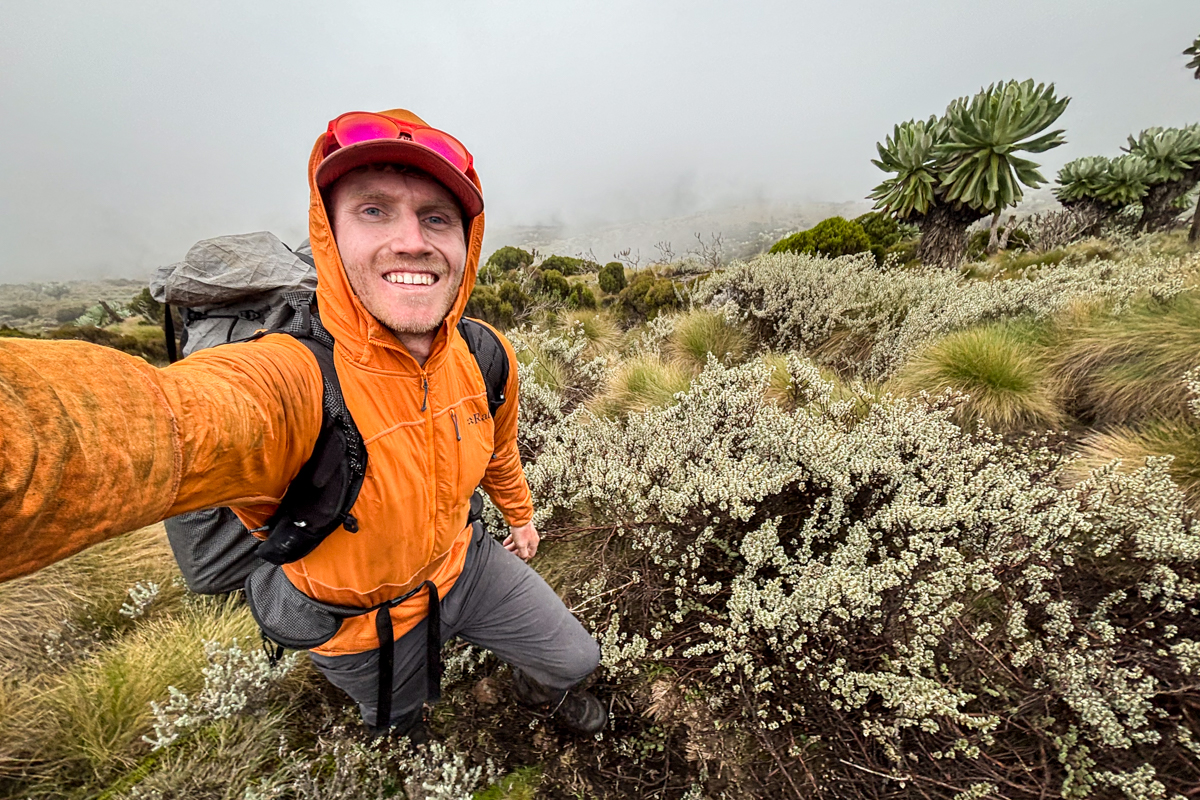
Lightweight
Boots in this lightweight category are, not surprisingly, light and flexible but also still tough enough for a longer day hike or short overnight backpacking trip. Options range from the more traditional Keen Targhee IV to the light and fast Salomon X Ultra 4 Mid. Waterproof liners are the norm, but they’re typically the less expensive type (read: non Gore-Tex). Materials used in the construction trend toward a heavy use of mesh and nylon with leather mixed in. This keeps cost and weight down, but doesn’t make them as durable as some pricier full-leather options. You also won’t see as stiff of a structure, as the boot’s shank and support won’t be very substantial. As long as you’re not carrying a heavy pack, that shouldn’t be a deterrent.
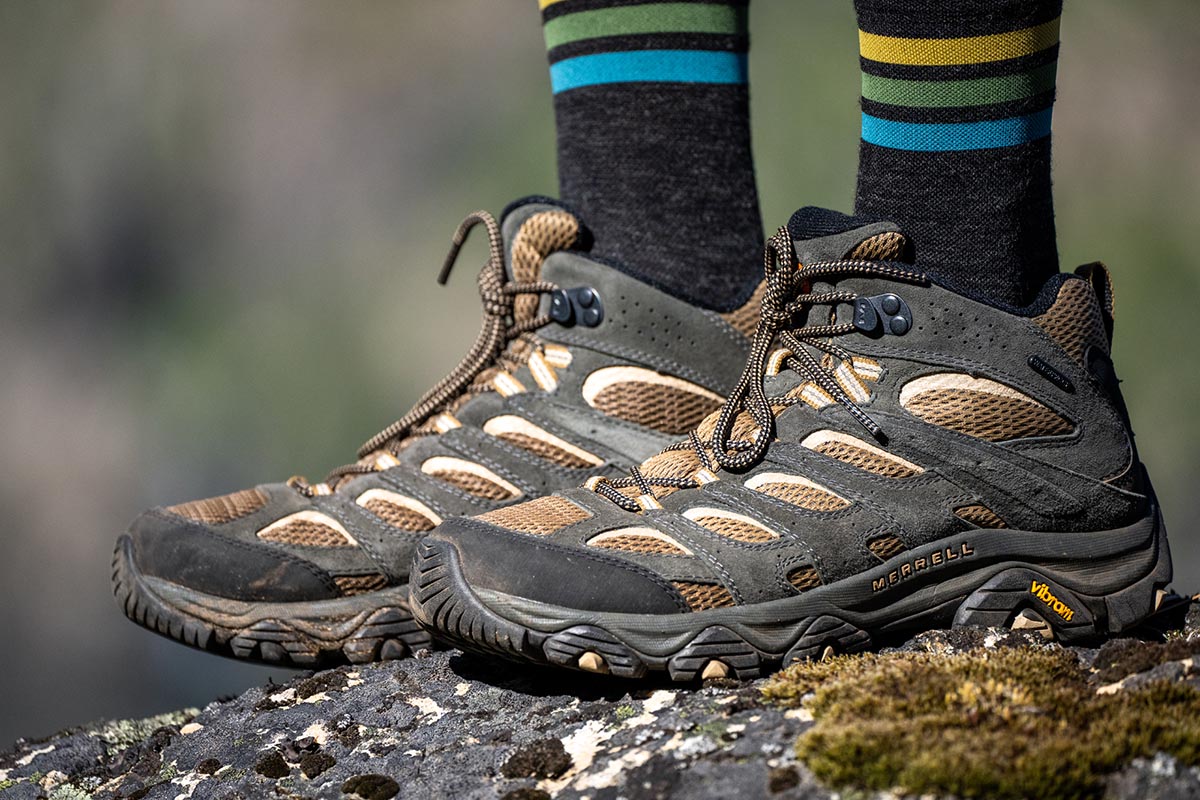
The popularity of trail running shoes for hiking and backpacking has spawned a new variation in this lightweight category of over-the-ankle trail runners. The basic concept is to take a popular running shoe like Hoka's Speedgoat or Altra’s Lone Peak and bring the collar and lacing system up a few inches. This provides a light boost in protection and support from a low-top trail runner but retains the lightweight, cushy, and fast feel of that footwear category. As we’ve found, however, there are a number of compromises, including durability, toe and foot protection from the thin materials, and support in technical terrain or when carrying a heavy load. But those who like to move fast and light and even mix in some running during their adventures may find that the pros of a nimble boot like Altra’s Lone Peak Hiker 2 above outweigh the cons.
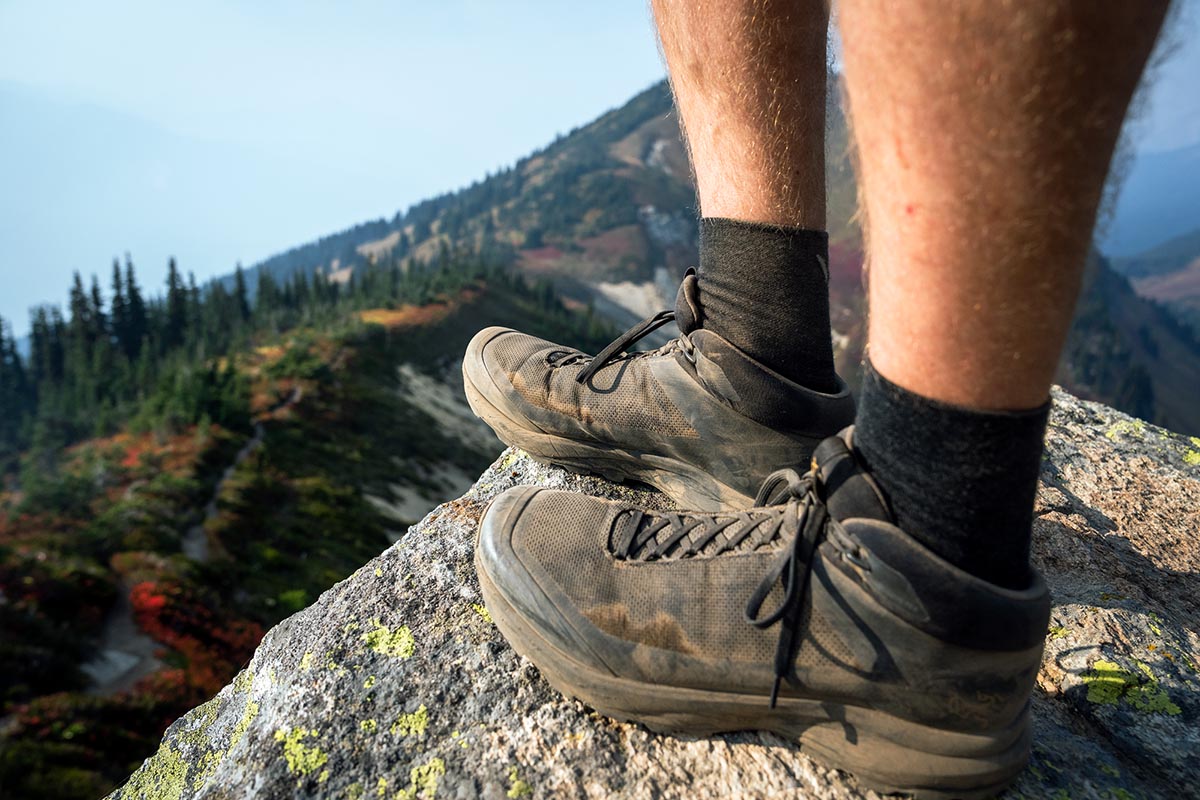
Midweight
Midweight boots are skilled compromisers, with enough support to carry a heavy load but without feeling like someone stuffed lead in your socks. It’s a rapidly growing category, reflecting demand from backpackers and serious day hikers for a light but capable option. It's also home to some of our favorite boots—the Scarpa Zodiac Plus GTX and Lowa Renegade Evo are both midweight. Solid support underfoot makes the boots a bit stiffer than your day hikers but not excessively so. Because of the quality of materials and construction techniques, prices in this category usually start at around $200. At that price point, the quality of the waterproof bootie improves and you’ll typically find GTX (Gore-Tex) in the name.
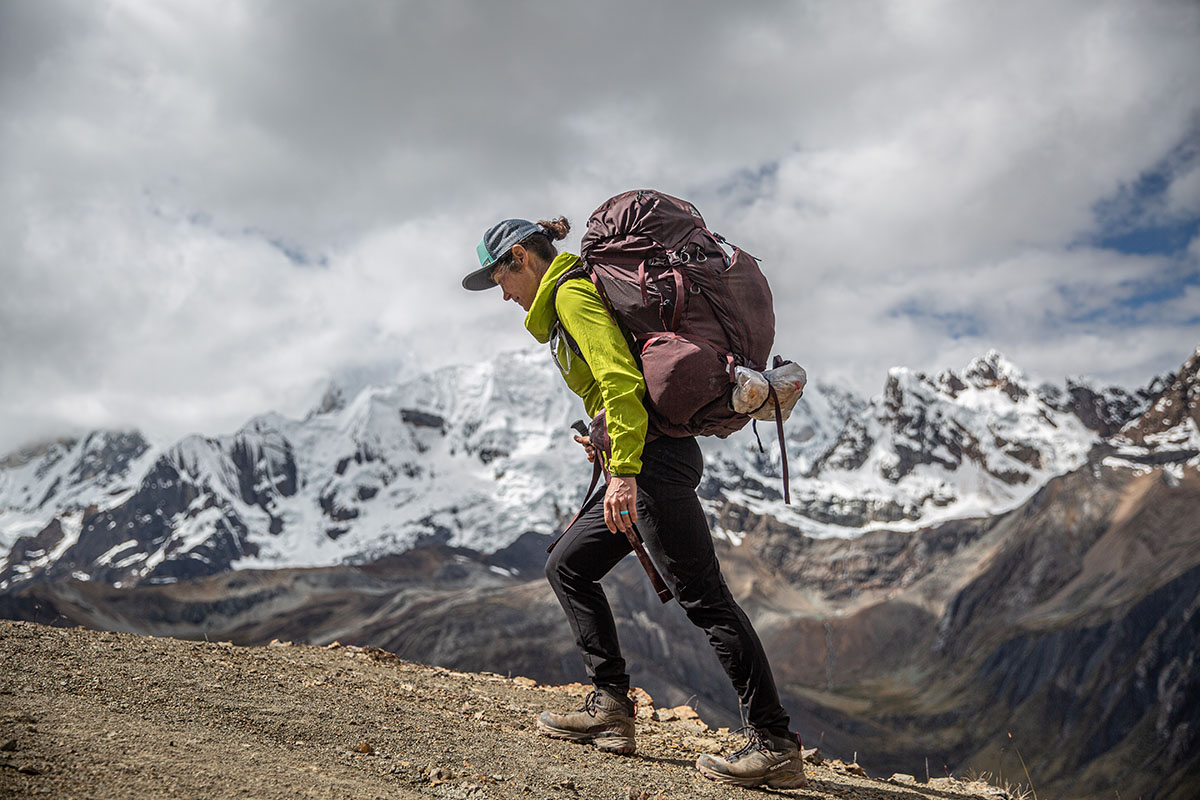
Heavyweight
Stiff, tough, and incredibly reliable, boot legends of the past were made in the heavyweight category. Classic models like the Zamberlan Vioz GTX remain popular for those wanting a full-leather design, but the shift towards lighter weights in boot construction has expanded the category to include models like the Salewa Mountain Trainer 2 Mid GTX (the heavier and more aggressive counterpart to the Mountain Trainer Lite included above).
In general, heavyweight boots are built for tough, rocky trails and long slogs with heavy backpacking packs. While the thick upper materials and Gore-Tex make for excellent performance in the wet and snow, they will run warm in hot conditions (some prefer a non-waterproof leather boot instead). Their solid structure also takes some of the strain out of long ascents by keeping the heel from dropping at each step, and often makes them friendly with strap-on crampons for light mountaineering. A final tip: Don’t pick up one of these boots and head directly to the trailhead for a long trip. Spend the time to break them in and you’ll have a backpacking footwear partner for years to come.
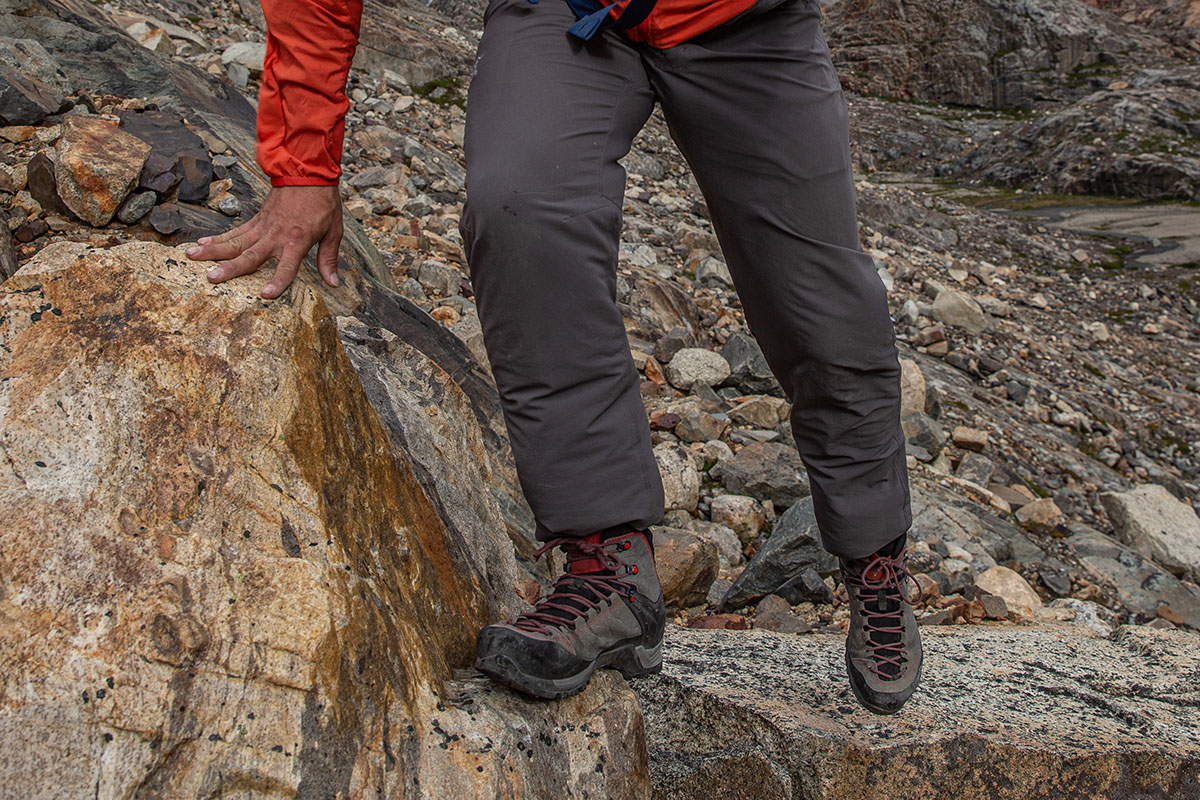
From a quick look at our comparison table above, it’s clear that hiking boot weights vary a lot. You can choose an over-the-ankle design anywhere from well over 3 pounds to under 2 in the case of the trail runner-inspired Altra Lone Peak Hiker 2 (1 lb. 9.6 oz.) and Salomon X Ultra 4 GTX (1 lb. 14 oz.). What’s equally obvious is how the various weights have an impact on a boot’s performance. To start, while the correlation isn’t perfect, a lighter boot generally will offer less protection, support and stability, and durability over the long term. This can present a problem if you’re carrying a heavy pack and traveling over rough terrain, but for thru-hikers or minimalists, going lightweight can be a great idea.
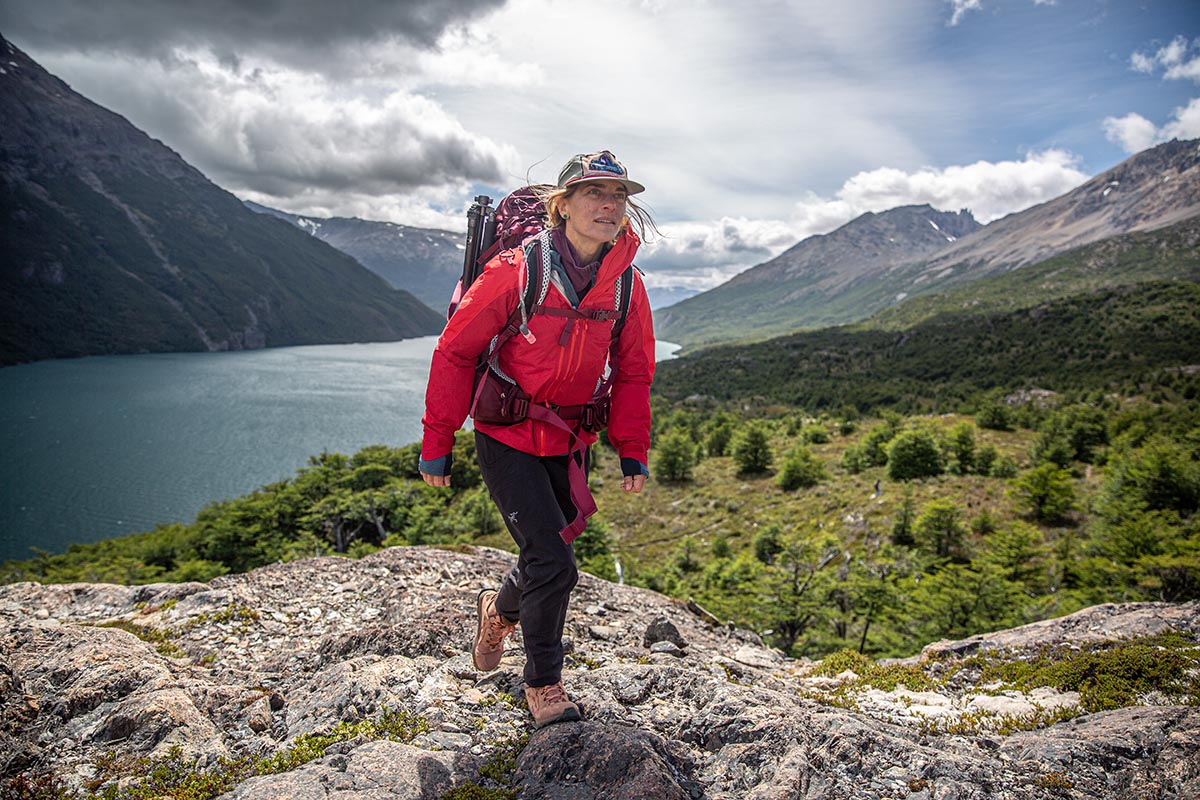
Whenever we can, we try and keep the weight of our boots to a minimum, providing enough comfort and support for the weight of our pack and the conditions, but without having to lug around anything extra. Depending on the trip, this can mean a lightweight trail-runner style for fastpacking all the way up to a burly boot like the Salewa MTN Trainer 2 Mid GTX for trekking through Nepal. If you’re going to choose one boot to do it all, the Salomon Quest 4 GTX does a great job balancing weight and performance.
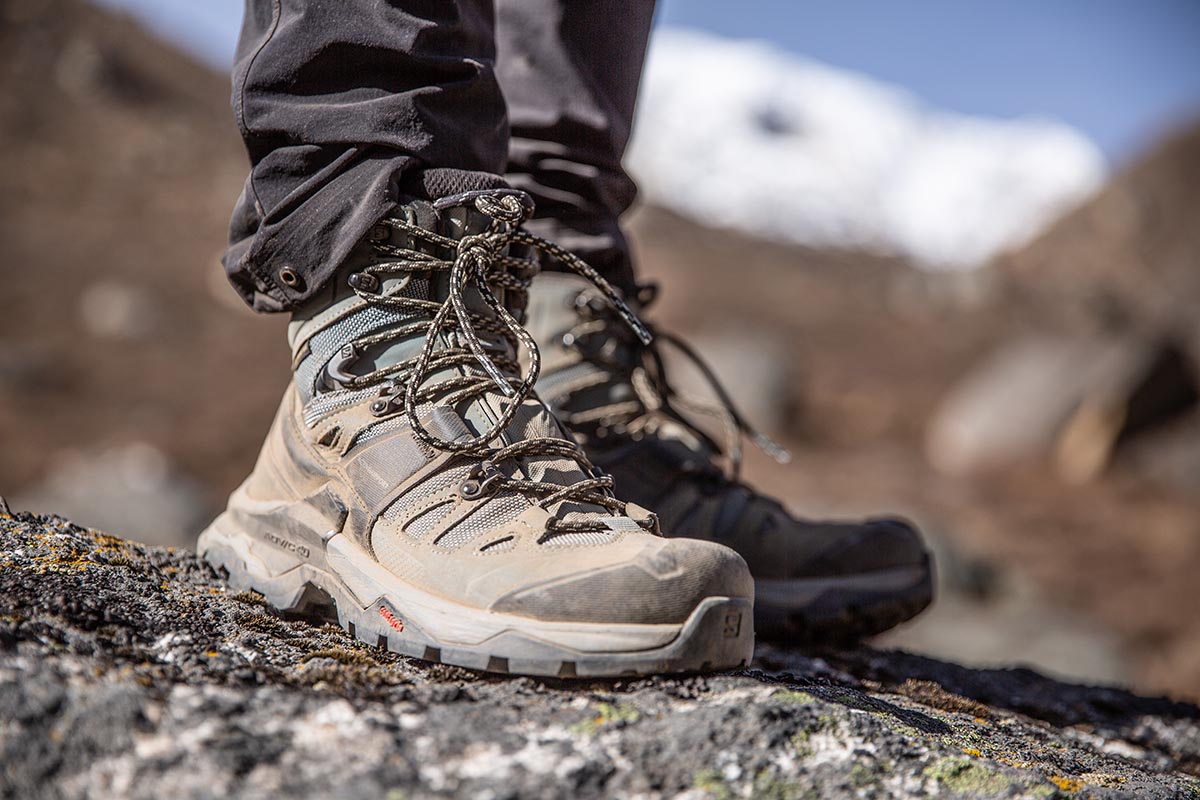
In general, a hiking boot is designed to be stable, which typically involves a piece of hard plastic inserted between the midsole and outsole, known as a shank. The length of the plastic can vary from just under the arch to the full-length of the boot, depending on intended use. The benefit of a stiff boot is that the heel will not drop on an ascent, which helps reduce calf fatigue. This is why the stiffness of a boot will increase along with its technical abilities, culminating in extremely unyielding mountaineering boots that can better handle long summit pushes. On the other end of the spectrum, some lightweight boots do not have this additional structure, instead resembling a tall, flexible hiking shoe.
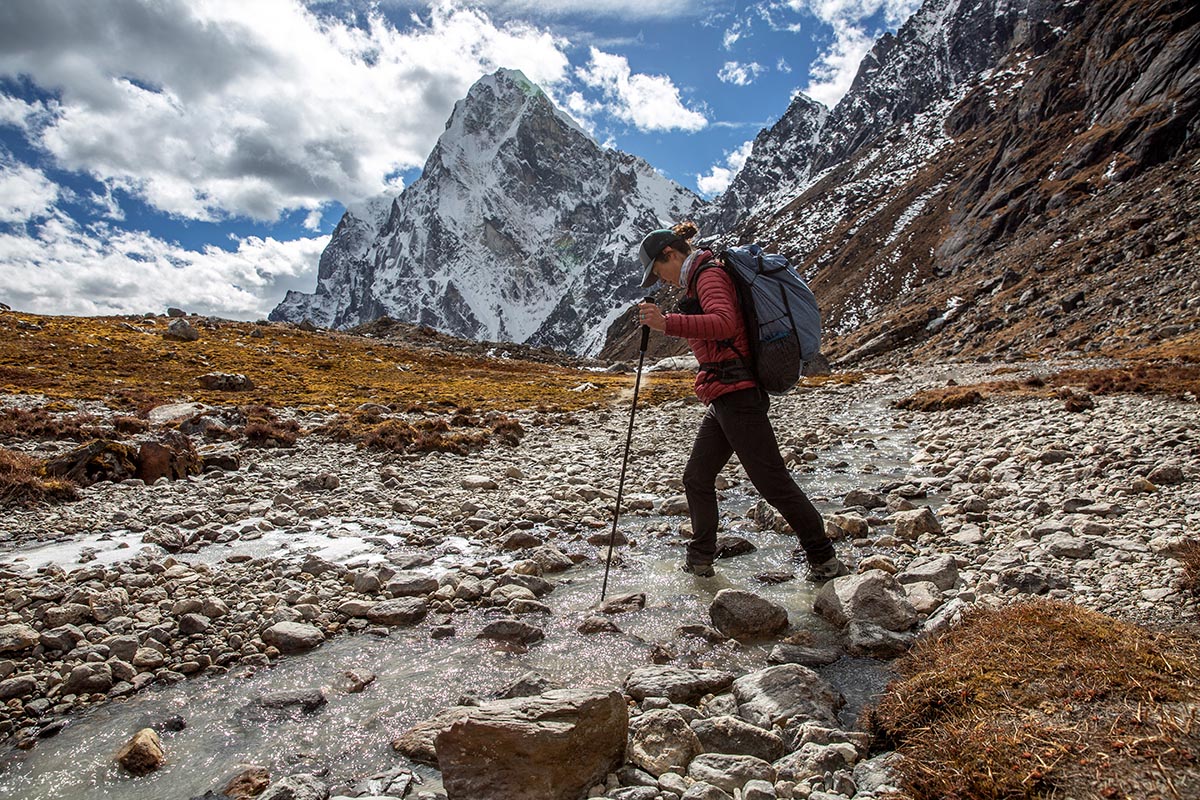
For day hikes on flatter or less technical terrain or if you're aiming to move fast and light, we can’t recommend a lightweight and flexible hiking boot enough. Shoes like the Altra Lone Peak Hiker 2 or Salomon X Ultra 4 Mid are standouts for these uses. But as your trips get longer and your pack gets heavier, a more substantial boot that increases ankle support is a better decision. Look to the Lowa Renegade Evo or Salomon Quest 4 for a great all-around option that is equally adept at conquering summit peaks and multi-day backpacking. On the extreme end, heavyweight boots like the Salewa MTN Trainer 2 Mid GTX are excellent for hiking in areas that require maximum support: off-trail bushwhacking, traversing an exposed area, or trekking over rough ground.
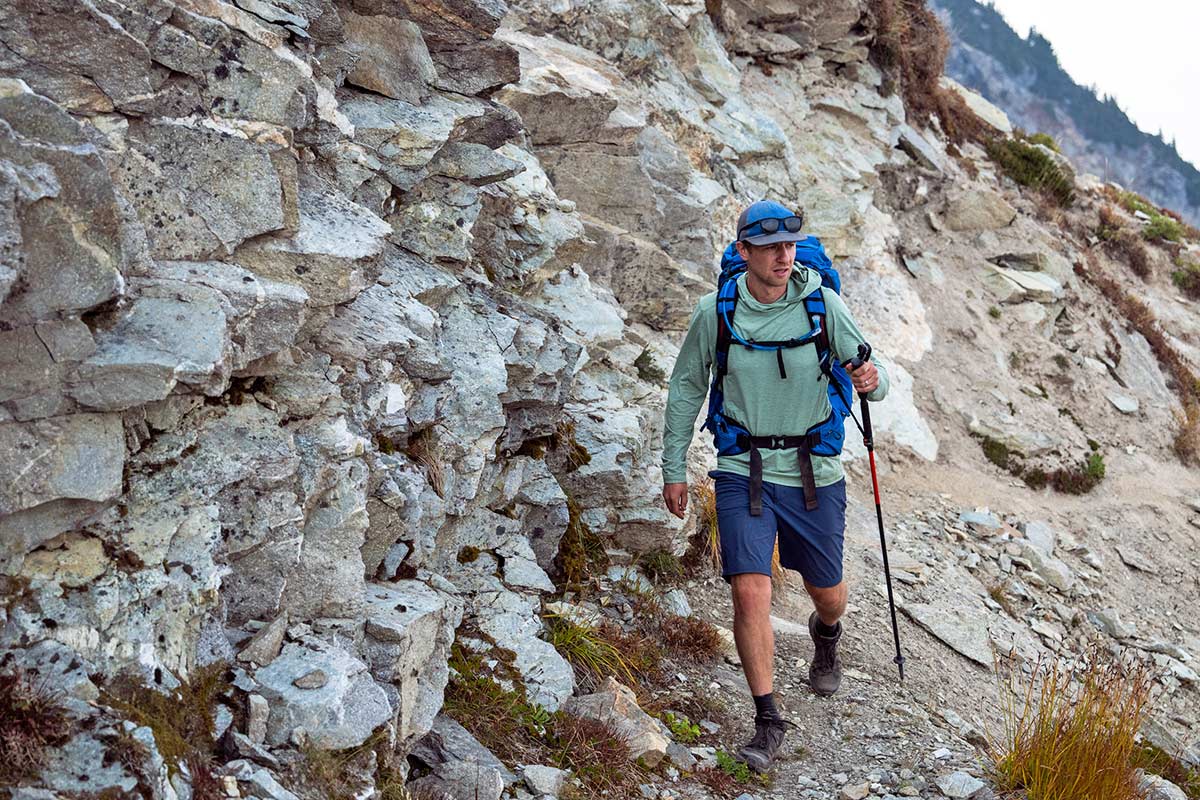
The vast majority of hiking boots are waterproof, and the security from a surprise deluge on a backpacking trip is reason enough for most folks to choose a GTX or Gore-Tex model. To make these boots waterproof, most designs have a waterproof and breathable bootie inserted inside the outer fabric. Gore-Tex liners are the most popular and have the brand cachet, but even in-house technologies like Keen's Keen.Dry are similar in terms of waterproofing performance (breathability and some inconsistency between models is where they’ll differ). In addition, a water-repellent coating is added to the boot to help bead up and shed water droplets.
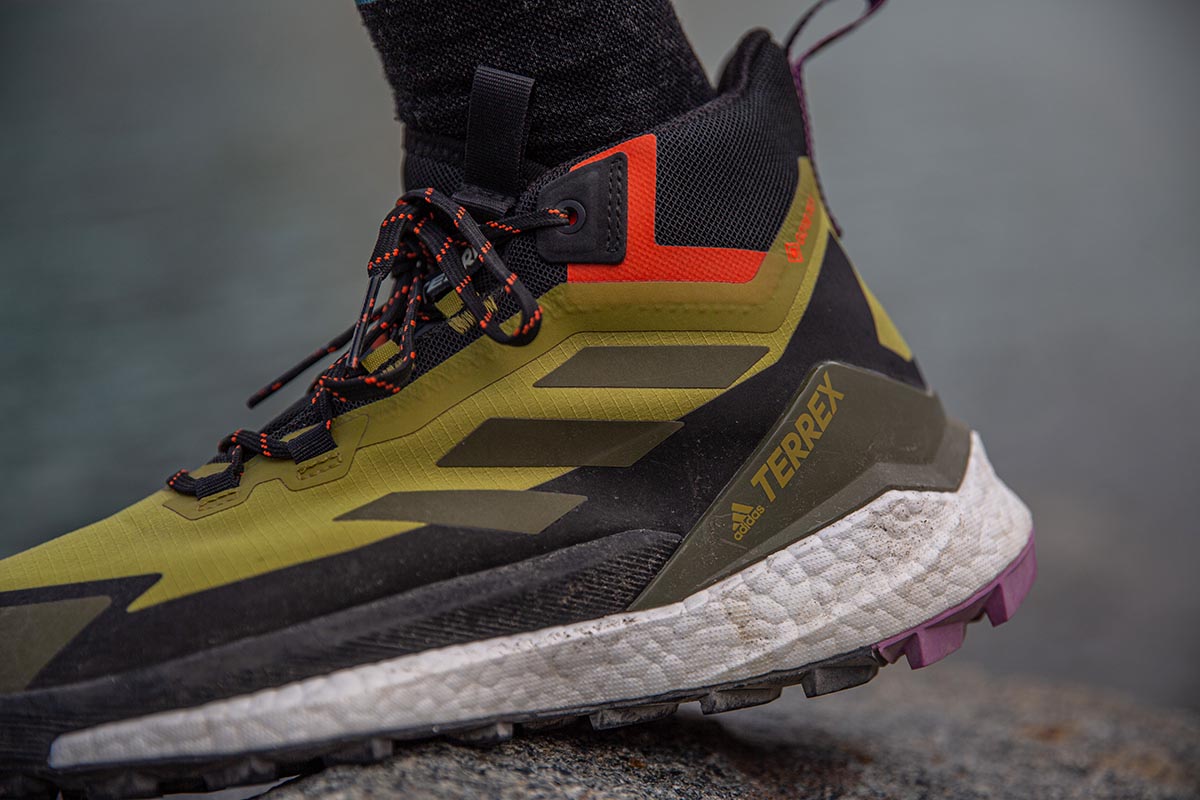
Most hiking boots are waterproof, but does that necessarily mean they should be? It’s nice to have waterproofing so your feet don’t get wet walking through mud or crossing a stream, but all the waterproofing does on a spring or summer backpacking trip to a place like Canyonlands is make your feet hot and sweaty (we cover breathability in greater detail below). And an argument can be made that your feet will eventually get soaked no matter the waterproof design in truly wet and miserable conditions. As an alternative, some backpackers turn to non-waterproof shoes with gaiters over the top for weather protection. While this won’t keep water from entering at the sides, the boots will dry much quicker. And the gaiters keep water, snow, or trail debris from entering over the top of the boot.
Our take on waterproofing is that it’s best for most folks, and particularly those that venture out in mountainous regions where water on the trail or a rainstorm is always a possibility. The designs aren’t perfect, but a quality waterproof lining will keep you reasonably dry in all but the worst weather. And if you hike in the shoulder seasons, the extra layer adds some insulation from the cold. But hikers in uniquely hot and dry places like Arizona and Utah may be best served with a non-waterproof model, no matter how few options there are on the market. A few that we like are the Merrell Moab 3 Mid (a sibling of the Moab Mid 3 WP on this list), Hoka Anacapa 2 Mid GTX, and Altra Lone Peak Hiker 2. For a deeper dive on the topic, see our article on waterproof hiking footwear.
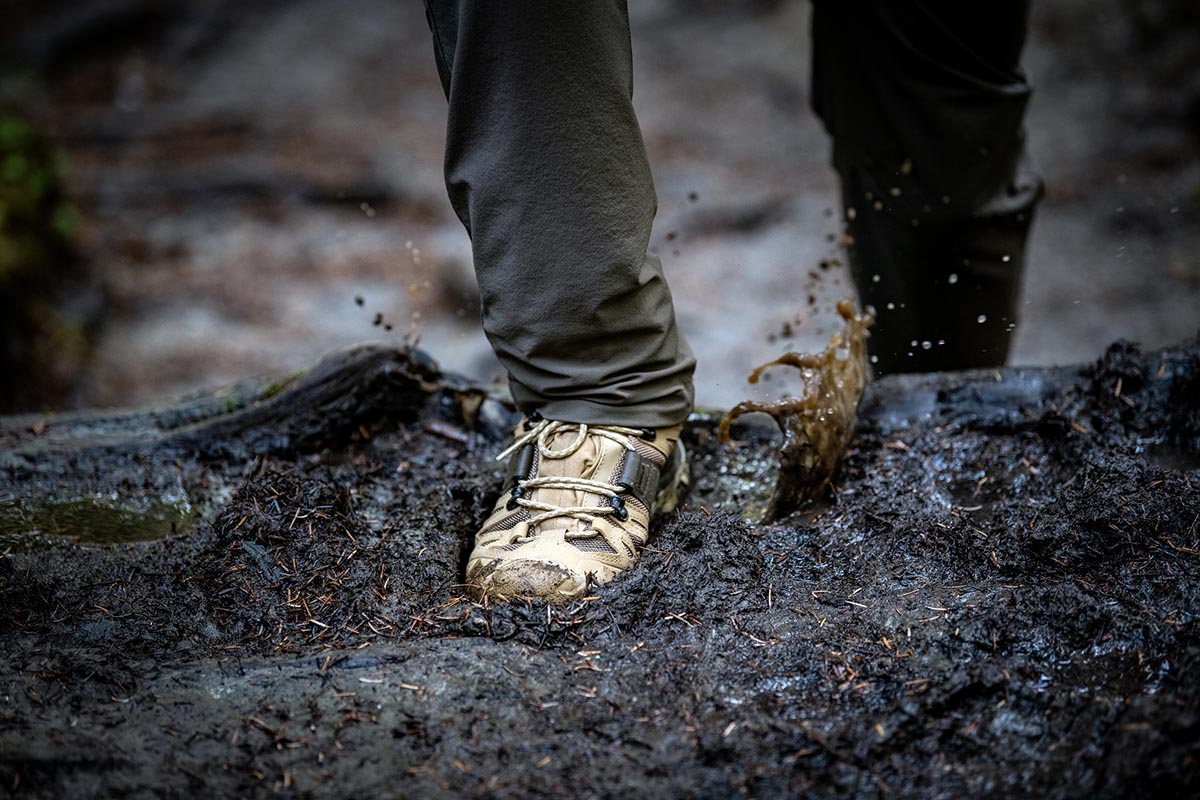
No matter what marketers say, making a boot waterproof inherently impacts breathability. By keeping water from entering from the outside, less moisture (your sweat) can quickly and easily escape from the inside, which means all forms of waterproof footwear can run warm in the summer months. There are, however, big differences between boot models in their ability to ventilate.
We’ve found that heavyweight leather boots with a Gore-Tex lining are often the worst performers, while the Gore-Tex Surround in the mesh-heavy La Sportiva Nucleo High II is a step above. In between, the Lowa Renegade Evo and Salomon Quest 4 both perform decently with their nylon and leather construction and Gore-Tex liners, and are completely suitable for summer backpacking trips. The cheaper membrane in the Oboz Bridger Mid boot fell short of those pricier options in our testing. Alternatively, if you are willing and able to ditch the waterproof lining altogether, boots like the Merrell Moab Mid are great options for hikers and backpackers.
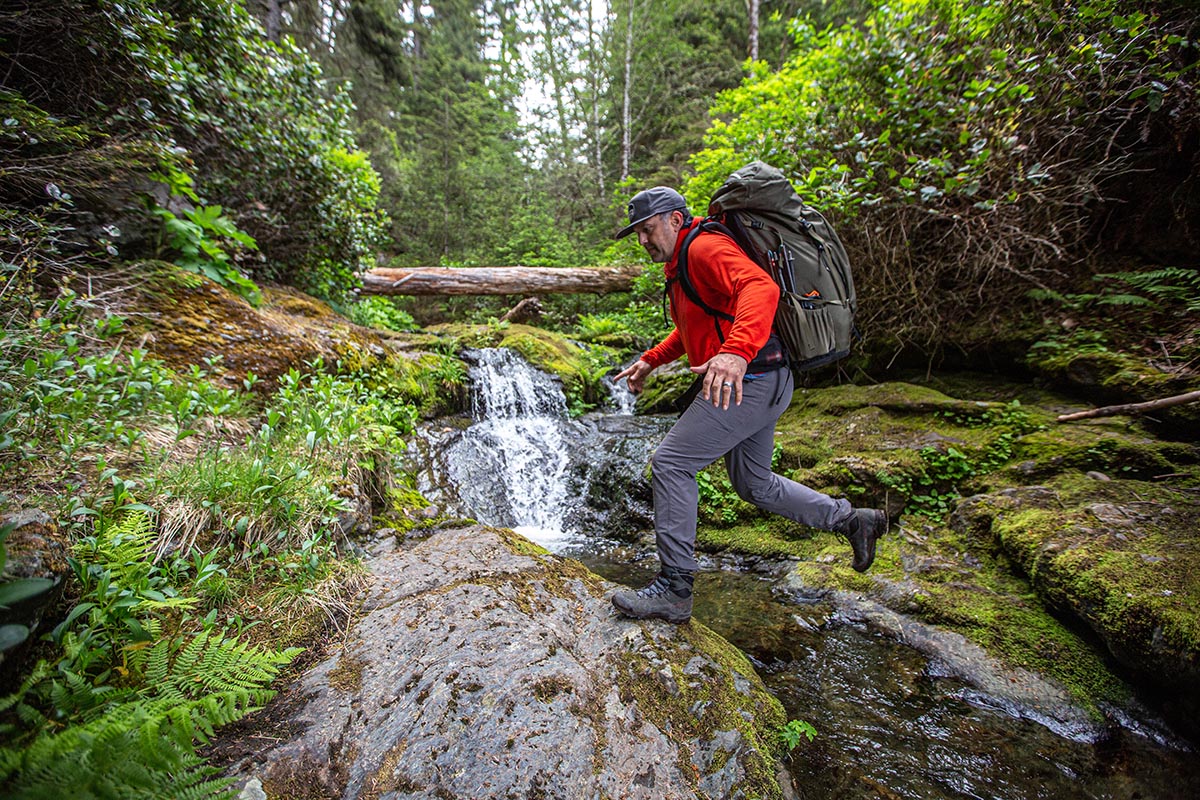
Laces are an overlooked feature on hiking boots but play an important role in fit and comfort. If a shoe has a poor lacing system prone to loosening, you’ll find yourself having to readjust constantly on the trail or deal with hot spots and blisters. If the culprit is just the laces themselves, it’s an easy fix: There are many quality replacement laces available that can usually be found at a local outdoors shop. But if the system itself doesn’t hold your foot or fit very well, we recommend looking elsewhere. For this reason, we are hesitant to recommend the single-pull speed lace designs from Salomon and Adidas. Although convenient, it can be more difficult to customize fit, which can lead to discomfort over long miles and when wearing a heavy pack.
As you upgrade to more aggressive designs, the lacing systems should also advance. Notable upgrades for boots include locking hooks near the bend at the ankle, such as those on the Salomon Quest or Lowa Renegade Evo boots. These hook eyelets keep the laces in place extremely well, which increases comfort and on-trail performance. Boots without these locking hooks can come untied more easily by snagging on underbrush while hiking, which can get extremely annoying. Make sure you feel comfortable with the lacing system and hook eyelets of your boots before braving the backcountry.
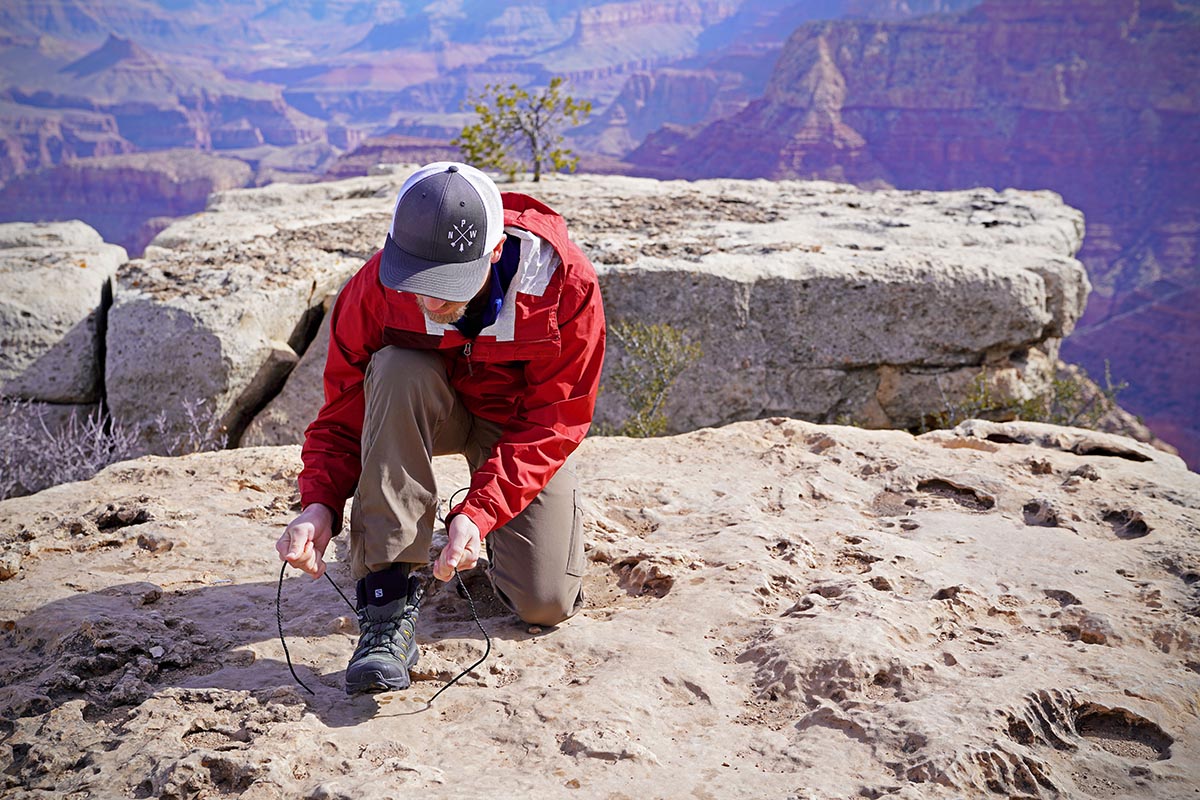
The type of material used in a shoe’s upper, which is the fabric that connects to the rubber outsole, correlates directly with its durability, water resistance and ability to breathe. Most often, a boot or shoe will be made with a mix of synthetic (typically nylon), mesh, and leather. There are exceptions, particularly at the high-end with one-piece leather constructions. Below we spell out the pros and cons for the most common materials used for hiking footwear.
Synthetic Nylon and Mesh
Woven nylon as well as open mesh nylon panels are common on entry and mid-level boots to aid in breathability. They’re not as well known for their durability but do a great job of cutting weight. Moreover, the fabric can absorb moisture faster than a leather boot. Exceptions include the Salomon Quest 4, which is made of tightly woven nylon panels that have comparable levels of durability to some Nubuck leathers despite a lot of exterior stitching.
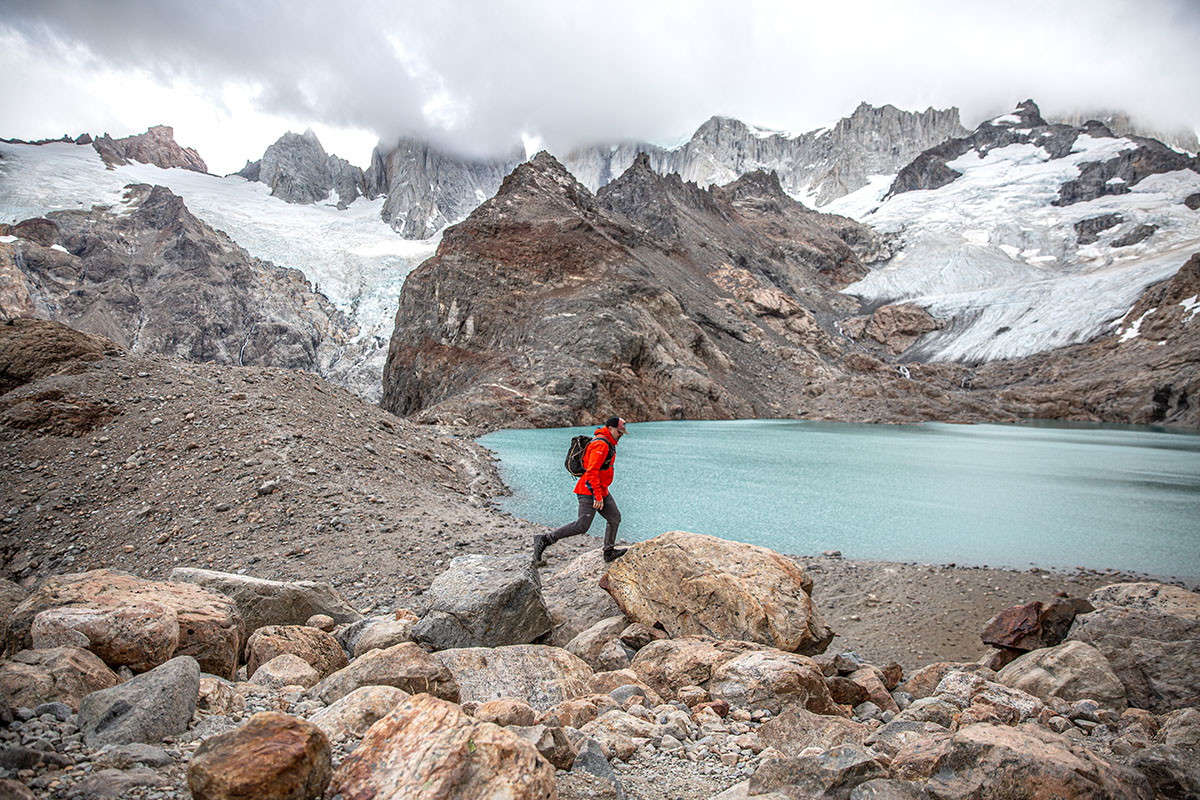
Nubuck and Suede Leather
Made of full grain leather, but given a brushed finish that has a suede-like feel, Nubuck leather is a common site on mid-range boots. The softer touch leather is lighter and more flexible than traditional, glossy full-leather options, but the thinner construction isn't as durable. It is, however, more durable than most nylon mesh inserts, and as a result, it’s common to find a mix of Nubuck leather and mesh, with the leather bits giving the boots a little extra toughness. Additionally, Nubuck leather tends to breathe better than full-grain leather and isn’t as prone to showing scuffmarks thanks to its brushed finish.
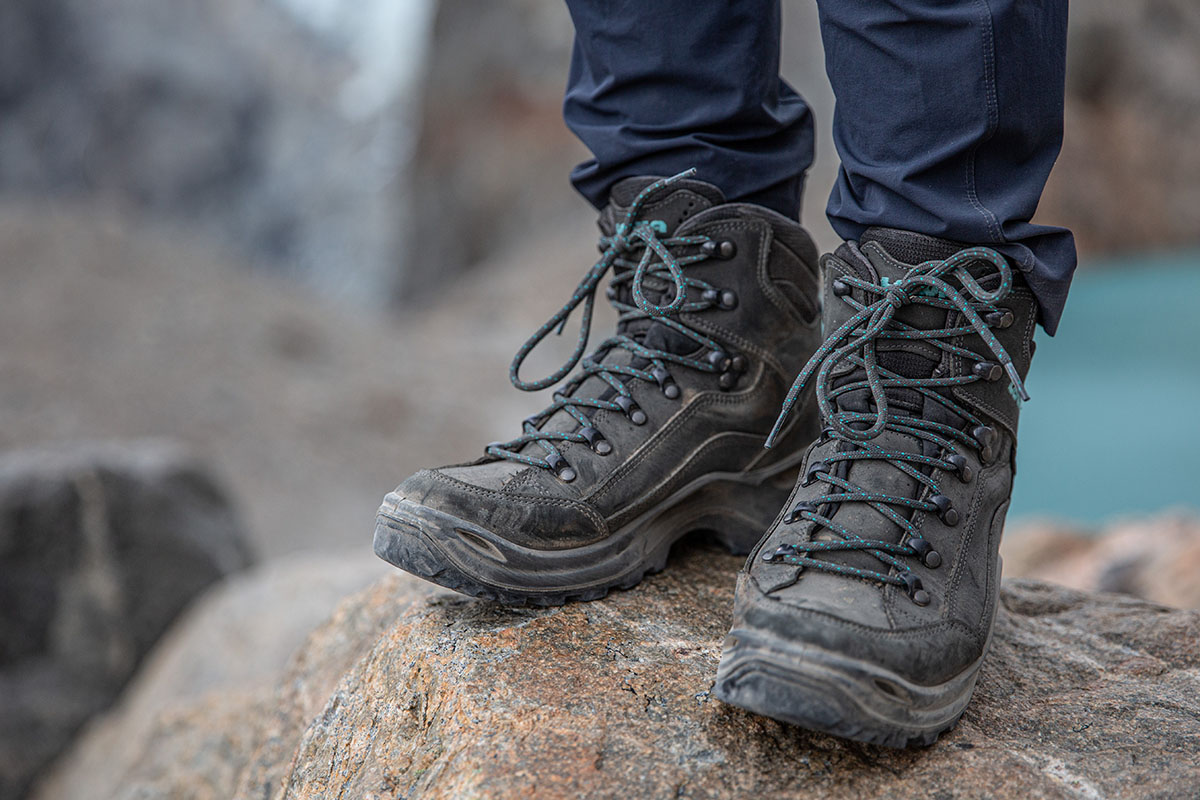
Full-Grain Leather
This type of upper is most often found on tough, heavyweight boots. You’ll find one-piece leather uppers on high-end boots like the Zamberlan Vioz GTX, Asolo TPS 520 (not listed above), or in Danner’s boot collection. These designs are not light or as breathable, but are incredibly tough and water resistant. They do require some maintenance to keep the leather in good shape, but they’ll reward those cleaning efforts with a construction that is built to outlast everything else on the market. As an added bonus, some boots like the Danner Mountain Light can be re-soled, so you don’t need to replace the whole boot once you wear down the lugs.
While wearing hiking boots, it’s common to carry a decent amount of weight, which puts a lot of stress on your feet. Combined with the rubber outsole, the midsole plays the essential role of shock absorber from impacts and provides an additional layer of protection from sharp rocks. Depending on the design, midsoles vary from very thin (fastpacking boot) to stiff and substantial (full leather hiking boot). Most include EVA foam, PU (polyurethane), or a combination of both in their construction.
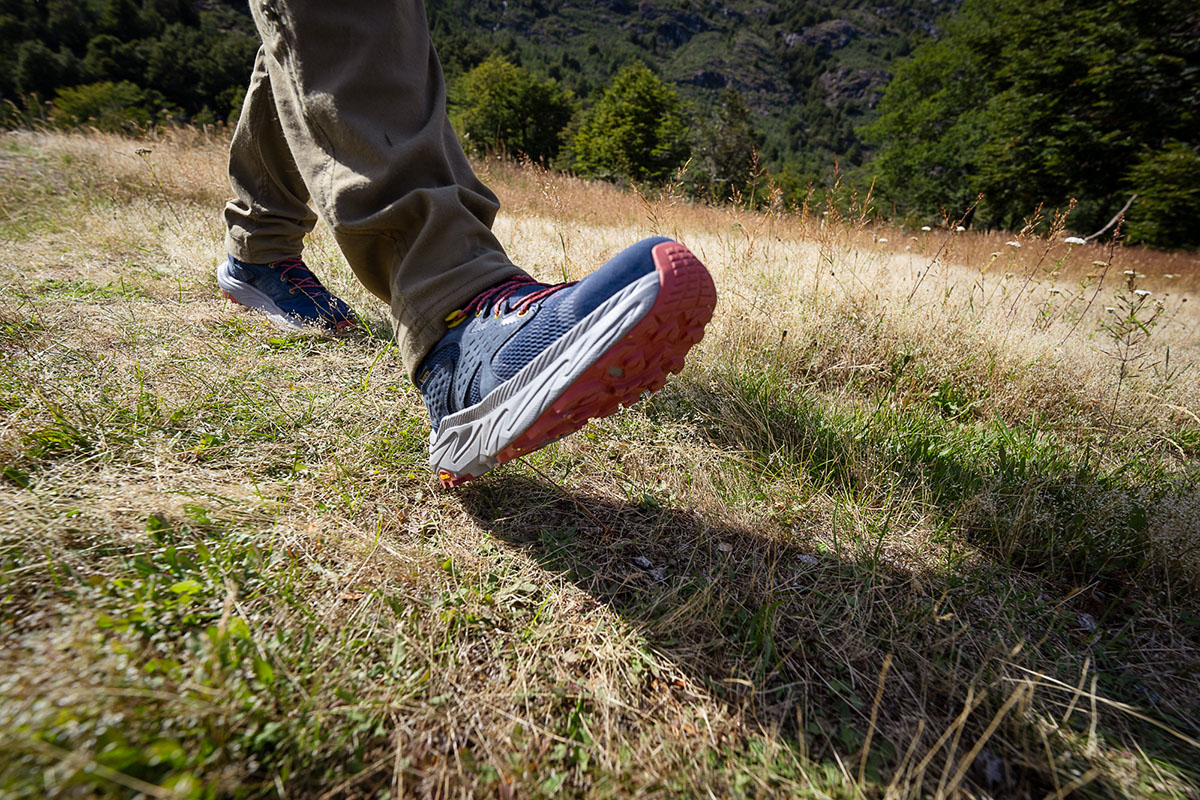
EVA
The majority of light and midweight hiking boots use EVA foam in the midsole. The cushy, soft material takes some of the sting out of your heel or midfoot impacts and is also extremely lightweight. Not all EVA should be treated equally, and the proprietary versions can vary from super soft to mildly stiff. For logging serious miles on tougher terrain, we prefer a firm and supportive midsole as opposed to too much cushioning. Those overly-soft midsoles also have a tendency to break down over time, much like a running shoe. In general, you pay more for an improved midsole design and a higher-quality EVA compound.
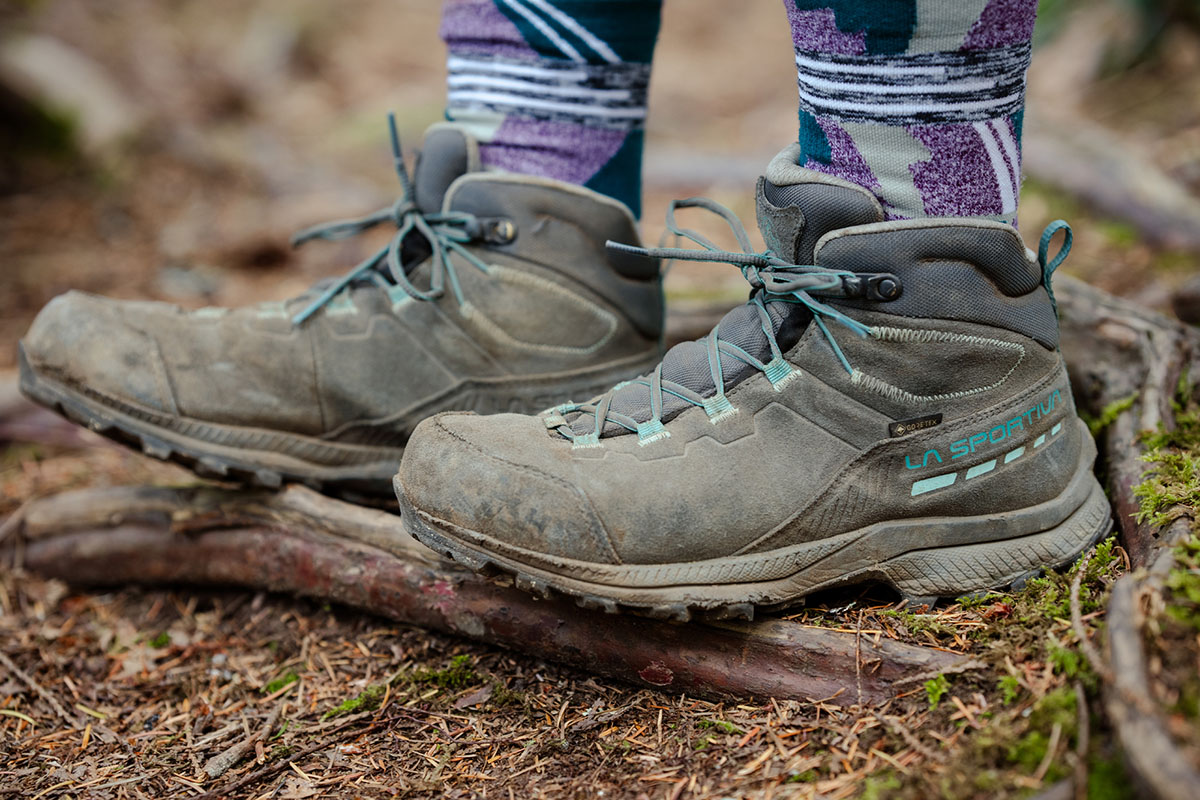
PU
For tougher applications or when it’s a priority to isolate your feet from rough impacts, manufacturers will use a PU or polyurethane midsole. This durable foam is far less cushy than midsoles with only EVA but will last longer and better handle a heavier load. In addition, they’ll keep their shape longer and won’t be prone to compressing like EVA. Boots like the Asolo TPS 520 Evo use a polyurethane insole, but the material’s popularity is expanding to mid-range options—despite the extra cost—with the Scarpa Zodiac Plus being a recent example.
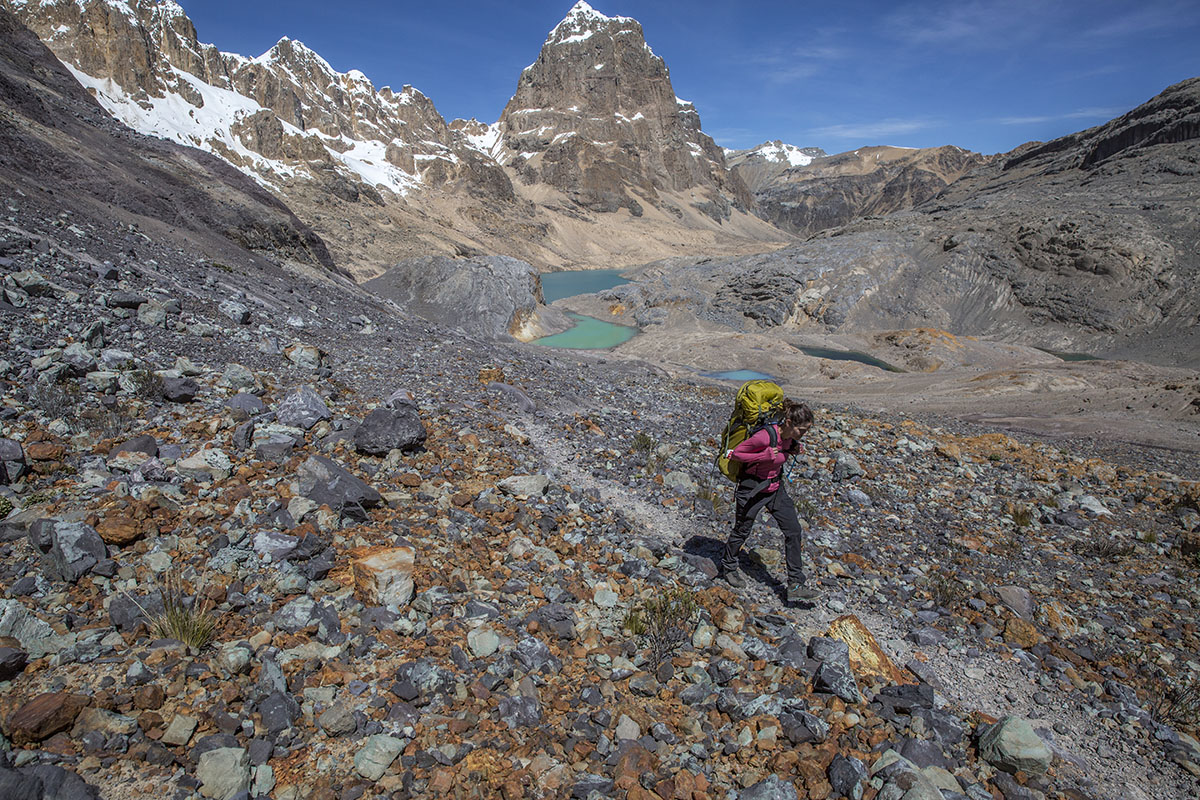
The motivation behind upgrading from a flimsy cross trainer to a real hiking boot or shoe is often for improved traction. In short, hiking footwear is leaps and bounds better when the going gets rocky, slippery, and steep. And much in the same way that Gore-Tex dominates the market for mid to high-end waterproofing, Vibram inhabits a similar space for outsoles. Not all Vibram models should be treated as equals, however, as the rubber manufacturer tailors their designs for the specific footwear and brand. Some have much larger lugs underfoot (listed in mm) for serious grip in mud, and others prioritize durability or sticky rubber for scrambling over rocks (the Megagrip compound is a favorite). There are also more entry-level options that just do well on easier trails, like the lugs you’ll find on the bottom of the Merrell Moab boots and shoes. The lesson is it's worth taking a look at the lug depth and description of the compound type to find out where a specific outsole will perform best.
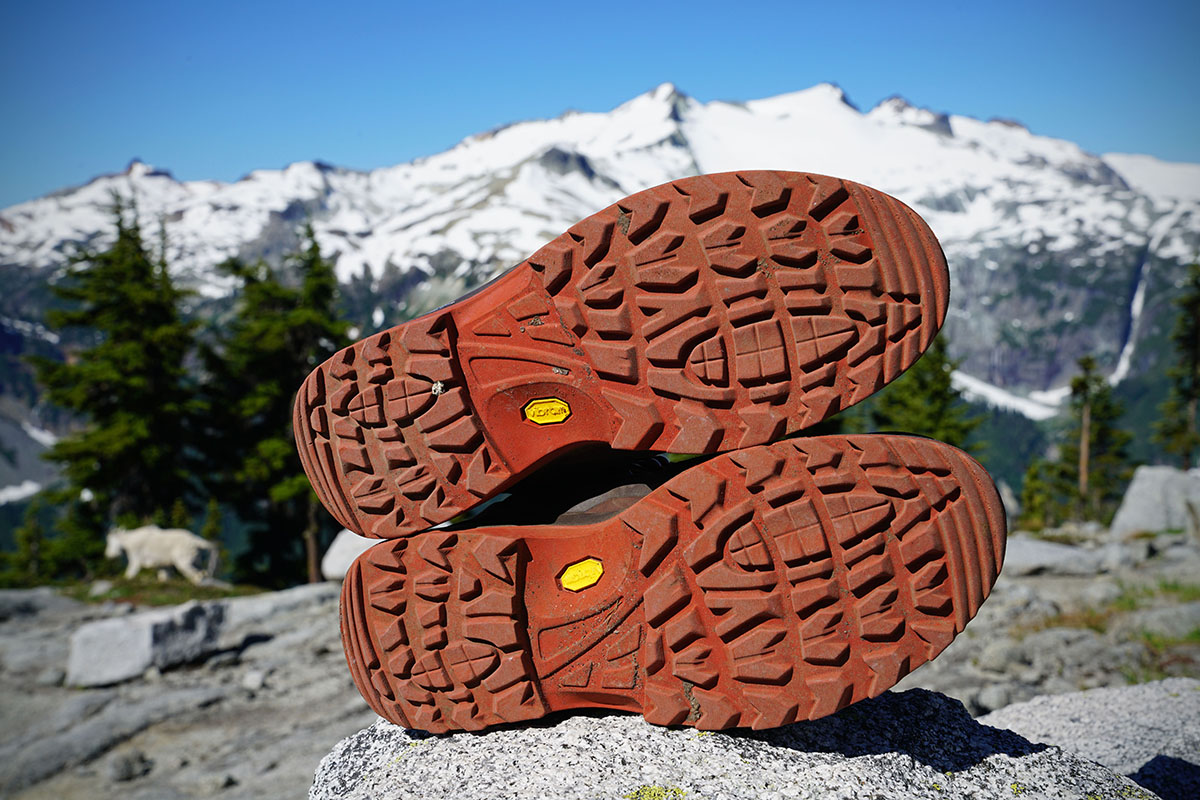
Salomon is one brand that doesn’t outsource their traction needs. Instead, they use their in-house Contagrip brand for all of their boots and shoe models. And with years of experience in everything from trail running to hiking, they aren’t short on expertise. The level of quality and performance is in-line with the Vibram offerings across the board, on anything from their fast-and-light X Ultra Mid hiking boots to the burly Salomon Quest 4 backpacking boots.
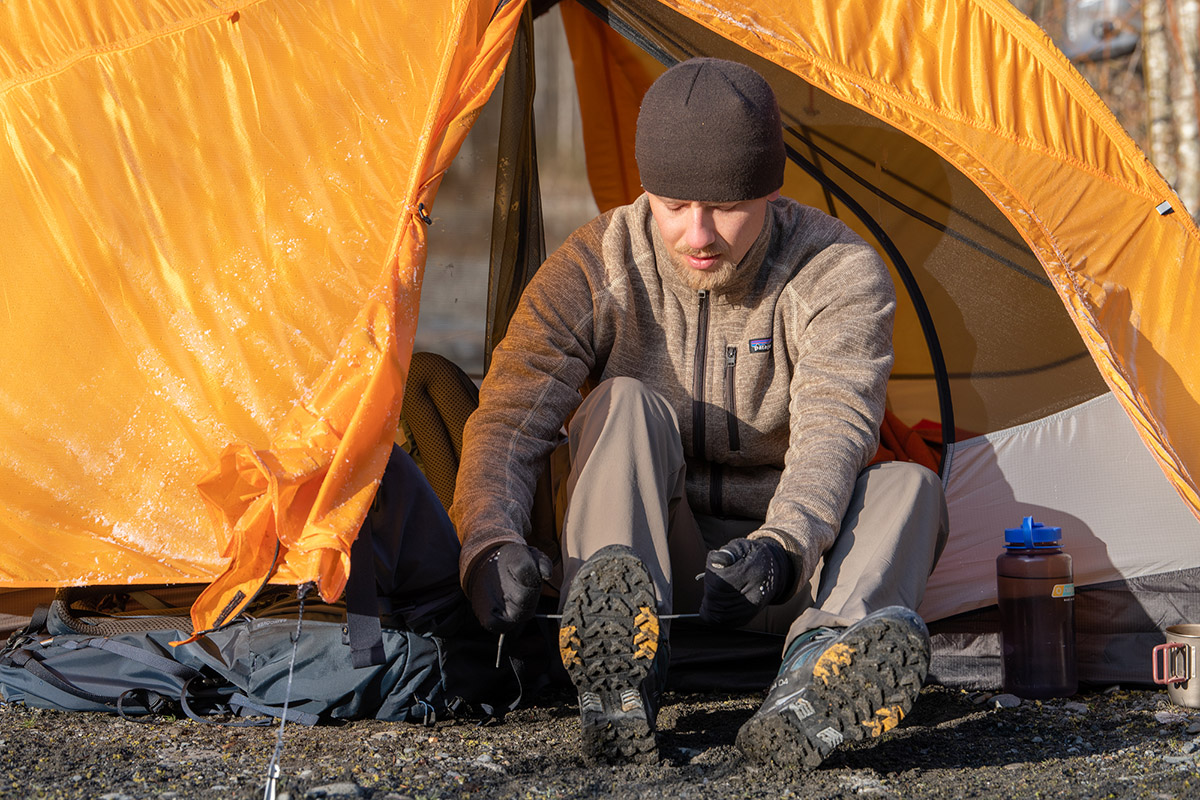
Toe caps or rubber rands cover the front of many hiking boots, and we consider them an essential element of backpacking boot design. These thick pieces of rubber are there to keep your toes in one piece should you accidentally—and in our case, eventually—kick a rock on the trail. One standout from our list above is the Scarpa Zodiac, which has protection that wraps completely around the front of the foot. To cut weight, some manufacturers will occasionally take away or diminish this feature, as we see on the Altra Lone Peak Hiker. Speaking from experience, we’d prefer that Altra included a more substantial toe cap after catching and bruising one of our digits on a rock while hiking in Washington's Enchantments. If you go lightweight, toe protection is one area where you may sacrifice.
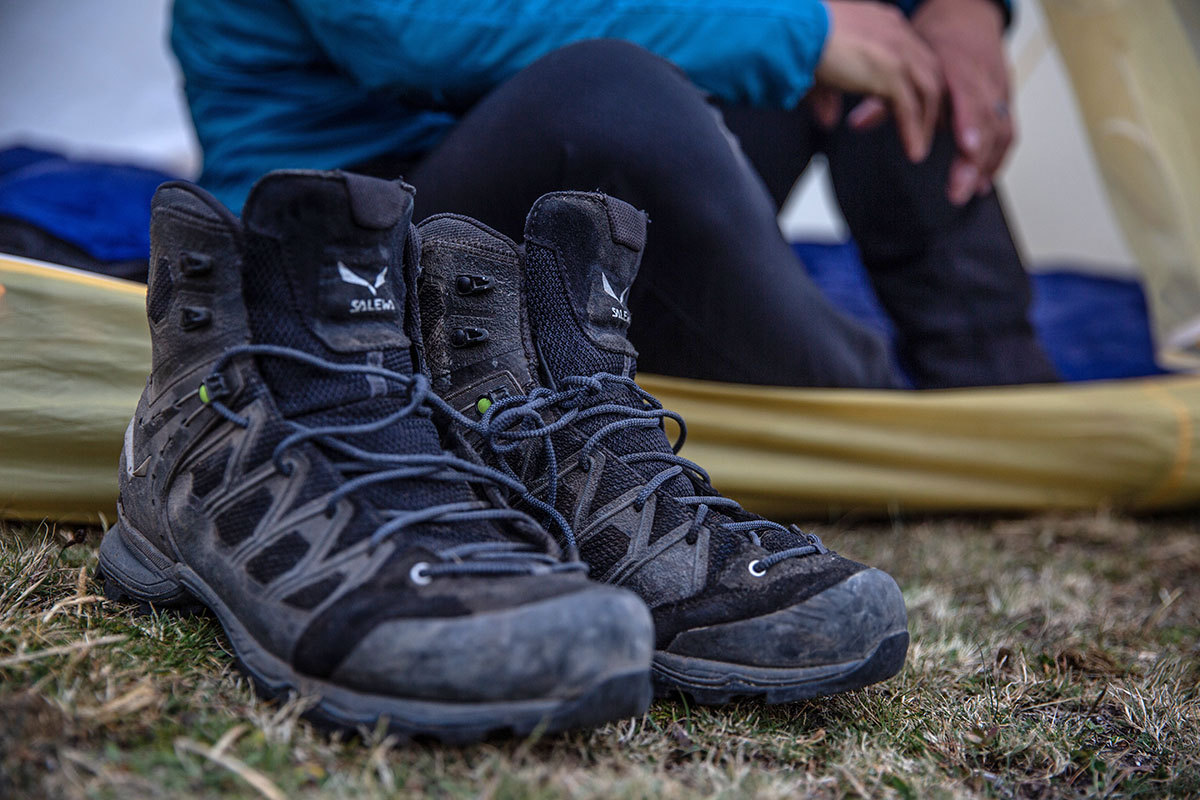
Getting a proper fit can be a real pain, and in many cases the blame is a generic, flat insole. Thankfully, removing your stock insoles is super easy, and replacing them with an aftermarket model that’s specific to your foot size and shape can remedy most shoe maladies. New insoles can provide more or less volume to fill out the shoe, improve the fit under the arch, and increase or decrease the cushion and impact shock. We recommend checking out Superfeet insoles for their wide selection of options and trusted reputation in running shoes, ski boots, and hiking footwear.
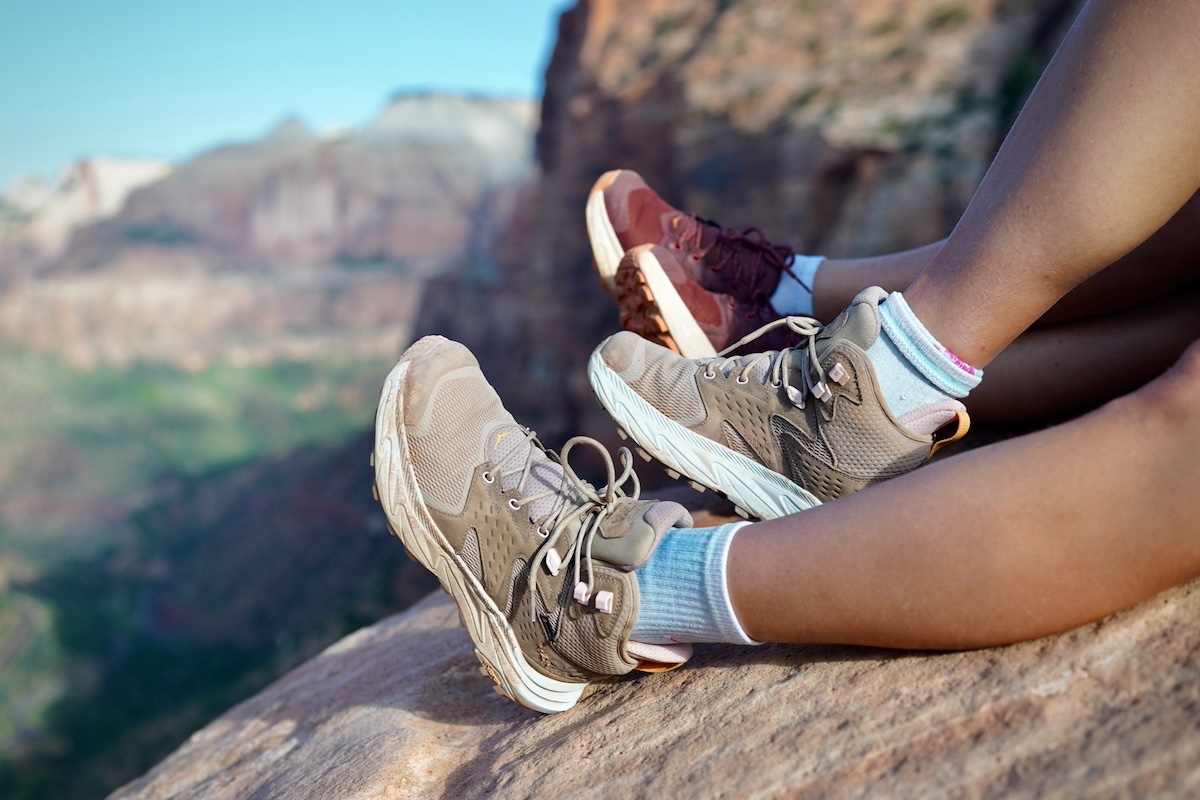
Each year, more and more brands are innovating to utilize eco-friendlier materials. Whether that means using recycled or recyclable materials, repurposed components, or new innovations, we appreciate the push in this direction. This info is typically easy to find, as brands want folks to know when they've put effort or resources toward improving their lineup. Additionally, you as the shopper can make sustainable choices by opting for more durable footwear. While going lighter is all the rage these days, lightweight designs simply don't last as long as beefier boots. If you're OK with some added weight and a longer break-in period, choosing a boot with heftier components and more leather could mean having a well-performing hiker for a decade instead of just a season or two. Lastly, it's worth checking if your brand of choice has any options for fixing worn components or resoling—services like Danner's Recrafting are committed to just this. And when the time comes for moving on, there are some great recycling programs to explore, like Ridwell and TerraCycle.
One of the key decisions in choosing hiking footwear is selecting either an over-the-ankle boot or low-top shoe. Each style has its respective strengths, and we use them interchangeably for hiking and backpacking trips. We’ve found that hiking shoe models vary just as much as the boots listed above, so you can choose from stiff and supportive down to light and nimble.
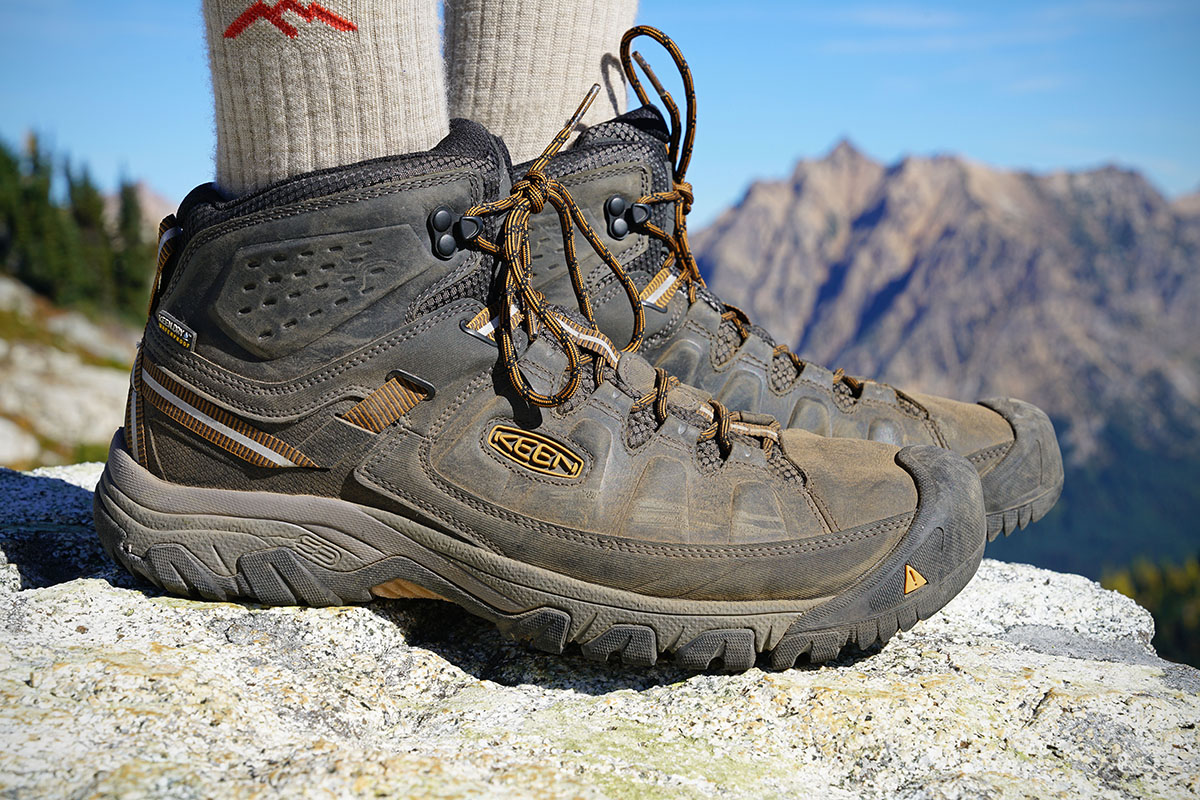
In the end, the differentiators between boots and shoes are protection, stability, and weight. Many hikers gravitate toward boots for the added ankle support and coverage they offer. However, a lot of hikers—primarily long-distance backpackers and those who like to travel fast and light—are migrating to low-top shoes or even trail runners to reduce weight and leg fatigue over the long haul. Over time and with proper training, the muscles around the ankle can be trained and strengthened to allow hikers to trek over the same terrain in low-top shoes that they would otherwise tackle with traditional boots. For rocky terrain, water crossings, snow, and carrying a heavy backpacking pack, a boot is still our preferred option. There isn’t a definite right answer in this debate, but the weight of your gear and the conditions you’ll be hiking in can make the decision a lot simpler. For many dedicated outdoorspeople, it’s worth having at least a pair of each in their quiver.
Back to Our Top Hiking Boot Picks Back to Our Hiking Boot Comparison Table